











Sophomore Mica Podoly rocks a pink cardigan over a white Garage tank and low rise Edikted jeans. “A lot of my closet consists of basic pieces and neutrals. Recently, I’ve been finding more fun pieces to dress them up and make new outfits,” Podoly said.
Read more on pg. 34


Editors-in-Chief
Celine Chien, Ben Siegel
Faces of M-A
Staff Writers

News Editor

Ameya Nori
Culture & Features Editor
Celeste Zucker
Events Editor
Lindsay Park
Sports Editor
Tessa Ellingson
Social Media Manager
Allegra Hoddie
Copy Editors


Morgan Baudler, Rose Chane, Leah Collins, Gaby Foster, Isabel Habibi, Alessandra Hartwig, Becca Koenig, Jenna Lee, Maeve Miller, Huraman Orujov, Alli Schindler, Caitlin Smith, Varsha Sripadham, Ella Thomson, Ben Warner
Caroline Baker, Oliver Bain, Delilah Bellis Rivera, Taylor Bentley, Katelyn Chao, Aliyah ChowdharyFitton, Paulina Cisneros Arreguin, Ilaria Cline, Kitty Cormican, Mateo Cuellar-Koh, Anna Dearing, Farah Ghajar, Parmis Hoghooghi, Louisa King, Kritya Kiran, Akemi Kwan, Bailey Lanier, Colin Lee, Lia Lev, D’Anjou Paul Libunao, Eileen Liu, Siboney Lynch, Liri Maoz, Sophie Marks, Karen Martinez, Abby Medin, Arjun Mitra, Teagan Murphy, Joe Pagee, Julinka Pang, Zara Parekh, Alisha Parikh-Briggs, Santi Quesada Tevis, Emily Pecore, Ellie Rosen, Micaela Rubinsky, Tatiola Sobomehin, Hana Suzuki, Charlie Tobin, June Wagner, Leilani Wallace, Ivy Watrous, Jonathan Weeks, Benji Weiss, Lilia Wilkiewicz, Amari Witt, Jovi Wong, Weycene Yang, Miya Yu
Advisor
John McBlair

For the past couple of weeks, I scoured the campus during lunch searching for students with a variety of styles to photograph for this issue’s Style Watch (pg. 34). Taking inspiration from the classic, clean look of fashion magazines like Vogue, I asked students to act as if they were a model—strike a pose! Act cool.
While some of the best photos were of students confidently gazing into my lens, others were captured in the moment after—letting their postures slip or their nervous giggles loose.
These portraits compelled us to try something new: five different covers, each spotlighting a distinct individual.
I hope that by doing this, we are able to slow down and see the people around us. Each featured student’s style and personality brings something unique to our campus. Together, they begin to weave the fabric of M-A.
by Lindsay Park



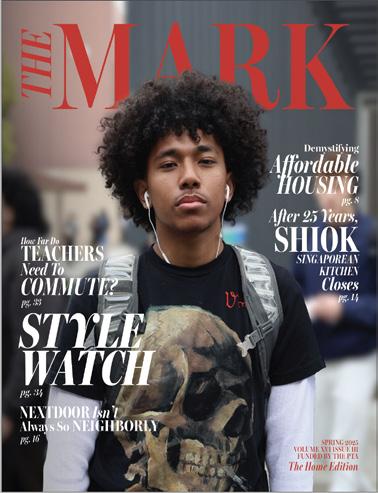

M-A’s past year has been shaped by profound loss. Within just 15 months, our community lost three students, one tutor, and one teacher. All were far too young—15, 17, 18, 21, and 40—and the weight of grief has been heavy and relentless.
But when we were at our lowest, we leaned on those around us and showed up for each other. From Leadership’s Lucy Run event, honoring Lucy Lunt and raising money to fight her neuromuscular disease, to the AVID community raising nearly $14,000 for tutor Diego Vasquez’s family after he passed, this year illuminated M-A’s ability to come together in support of those hurting.
The football team honored Omar Hussain by putting stickers with his name and jersey number on their helmets. The water polo team brought Dylan Scirpo’s cap with them to each game of the season. Within a day of administration’s announcement of history teacher Sam Harris’ death, students and staff piled flowers and handwritten notes outside his classroom.
As we continue to mourn those we’ve lost, we must also recognize our community’s strength and ability to come together across often-isolated groups, moving forward with unity and resilience beyond times of tragedy.
Best,
The M-A Chronicle Editorial Board









by Ilaria Cline and Allie Brottem designed by Caitlin Smith photos courtesy of Sophie Marks and Lindsay Park
“A place where I CAN BE MYSELF.”
— Sophomore Juliet West
“The people that SUPPORT me, LOVE me, RESPECT me, and are always there for me.”

— Freshman Vanessa Polly
“It’s more of a feeling, and it’s being PEOPLE I LOVE.”
— Junior Audrey Majzun
“Being
with my FRIENDS and FAMILY.”
— Junior Toa Walker
“A place where I feel SAFE COMFORTABLE.”
— Freshman Yoonwon Bae

— Junior Tati Schrader




“Where you feel most comfortable and where you feel SUPPORTED and WELCOMED.”
— Junior Josie Weiss
“Where I can DO ART and RELAX.”

— Senior Sabina Ortiz
“ Robotics and badminton, where I feel like I’m PART OF A COMMUNITY
— Senior Sacha Deb




“Somewhere where I can time with family or friends, and sleep.”
— Freshman Hector Martinez
“A COMMUNITY welcome for who I am.”
— Senior Bennett Zadig

“It’s about A FEELING PEOPLE associated more than a place.”
— Senior Faith Schubin


According to the data collected, 78% of teachers live more than five miles from M-A, and only 30% live within SUHSD boundaries. 39% of teachers have at least a thirty-minute commute, with the average being roughly 27 minutes.
The median sale price for Menlo Park houses in December 2024 was $2 million, 23 TIMES the amount a beginning SUHSD teacher makes.
ably by their lengthy commutes.
Located in the tech-concentrated Silicon Valley and in the country’s wealthiest zip code, M-A is not an ideal location for teachers. The median sale price for Menlo Park houses in December 2024 was $2 million, which is around 23 times the amount a beginning SUHSD teacher makes. In nearby Redwood City, the median sale price was $1.5 million, which is still a lofty price to afford on a teaching salary. With most financial advisors suggesting an individual should not spend more than 25% to 28% of their monthly income on housing, beginning teachers are left with roughly $7,200 a year to save up for a home in the best of
wanted to buy a home, and it was more affordable in Pacifica,” AP Environmental Science and Biology teacher Erica Woll, who has a 45-minute commute, said. “I wish there was convenient public transportation for me because if I took CalTrain it’s more downtime and less money,” she said. Pacifica’s significant distance from fast public transportation means Woll is forced to drive to school.
Though the construction of nearby affordable housing may aid teachers in affording to live in-district, difficulty finding nearby housing is unlikely to change. by Siboney Lynch designed by Amari Witt illustrated by Weycene Yang
circumstances.
Teachers who aspire to own property are often forced to buy homes far from district boundaries. “We had an opportunity to buy property, and we wanted to stay in the Bay Area. Half Moon Bay was the only place with nice neighborhoods where I could buy a condo,” English III teacher Elisa Nocedal said. Nocedal’s daily commute is around 40 minutes each way.
“I need to wake up significantly earlier. I have a hard time picking up my child and taking her to after-school activities because a lot of those things start early, and I can’t get there early. It also prevents me from being able to exercise more because it’s an hour and a half every day,” she added.
AS English II teacher Anton Gerth wakes up at 4:00 in the morning. Gerth lives in Santa Cruz, a decision he made based on how affordable the housing was.
“When I started working at M-A, I actually lived in San Mateo, and then we





Last year, California Governor Gavin Newsom invested over $40 billion and signed over 60 bills in an effort to expand affordable housing amidst a statewide housing crisis.
To comply with new ordinances, Menlo Park must construct 740 units of very low-income housing by 2031. “The city recently proposed a new housing initiative, which would construct affordable housing units in downtown parking lots, to meet these regulations.” These efforts have resulted in lawsuit threats, heated online debates, petitions, widespread pamphlets, and misinformation.

The proposed plan would add at least 345 units of below-market-rate, or BMR, housing in downtown parking lots between Santa Cruz Avenue and Oak Grove Avenue by 2027.
According to city plans, the space will be used for “multi-family residential, retail, office and personal services.” This is part of the city’s plan to reach the state requirement of 2,946 new housing units, including 1,662 affordable housing units, by 2031.



If this plan materializes, a minimum of all except 50 parking spots will be replaced. The city has yet to come up with an explicit plan for parking, stating that “parking will be provided, but the number of spaces, location and configuration have not yet been determined.”
The term “affordable housing” refers to homes that must be sold or rented at prices below the market rate to families or individuals earning below or between a specific percentage of the area’s median income (AMI).
The San Mateo County AMI is $186,600 for a household of four and $130,600 for an individual.
The proposed downtown units are intended for very low-income households, defined as those who make 30% to 50% of the AMI ($58,750-$97,900).
Current state income and rent limits state that the maximum affordable rent payment for a very low-income household is around $2,203 for a two-bedroom unit, $2,545 for a three-bedroom unit, or $2,840 for a four-bedroom unit. The average rent price in Menlo Park is $3,400.

The downtown area already faces congestion during rush hour. The city’s housing proposal does not include any specific plan to reduce traffic.
However, downtown’s proximity to the train station was a major appeal of this location. The California Surplus Land Act and other studies found that households located near major transit stations, especially lower-income ones, are more likely to use transit systems, decreasing commute times and heavy traffic.
In 2023, the state required Menlo Park to add 2,946 new housing units, 1,490 of those being affordable housing, by 2031. As of now, Menlo Park has 477 affordable housing units. If Menlo Park fails to meet its allocation, it will face repercussions from the state, such as loss of power over local land use, ineligibility for future grants, or a financial penalty of up to $50,000 per month.
If Menlo Park fails to meet its allocation, it will face repercussions from the state, such as loss of power over local land use, ineligibility for future grants, or a financial penalty of up to $50,000 per month.

The proposed land is owned by the city, which reduces costs and makes the project more desirable for developers. The area is also close to schools, jobs, healthcare, public transit, and more, satisfying state requirements for affordable housing. In a city-directed evaluation of all eight downtown parking lots completed in 2024, lots 1, 2, and 3 were chosen for their location, size, and accessibility.
Opponents of the project proposed locations such as the Civic Center near Burgess, which is also city-owned land. They argue this option would provide more space and a greener and more pleasant living area for all involved while remaining close to downtown and transit. The 6th Cycle 2023-2031 Housing Element explains that “[t]he City Council decided not to pursue housing development in the parks or the Civic Center site, given the importance of green space and community space for all residents.”
Affordable housing depends on grants, project vouchers, and other subsidies provided by the state government.

The California Housing Partnership found that there is no link between building affordable housing and an increase in violent and property crime. A study in Orange County, which just added many new affordable housing units, found that violent and property crime rates on average stayed the same or decreased slightly.
Does affordable housing impact the area’s PROPERTY
A common worry about affordable housing is that adding such a large quantity of BMR housing may lower the value of homes. However, one 10-year study examining different cities across the country, 45% of which were in California, found that property values remain roughly the same after the addition of more affordable housing.
by
With stores and restaurants lining its 600-mile stretch from San Diego to Sonoma, El Camino Real has been central to California communities since its establishment in 1550. For local businesses on El Camino, the busy street brings many customers, but it comes with downsides, including traffic and limited parking.
Celia’s, a Mexican restaurant, has been located at 1850 El Camino Real in Menlo Park since 2003 as part of a family-owned venture that began in 1968. Celia’s thrives on El Camino Real’s heavy traffic, drawing customers from across the Peninsula. “It’s a great location for us since it is one of the most traveled roads in the Bay,” Hector Robles, a manager at Celia’s, said. “We keep serving our happy and regular customers,” Fambrini’s Cafe manager Nick Vasi said. Fambrini’s, a charming restaurant at 2500 El Camino Real in Palo Alto, has served the community since 2011 and enjoys the visibility and steady stream of loyal customers from their location.
At 949 El Camino Real, the Guild Theatre is a lively addition to Menlo Park that benefits from being on a noticeable stretch. The live music venue recently reopened after renovations but has been a Menlo Park staple since 1926. “It is incredibly valuable that we are right on the
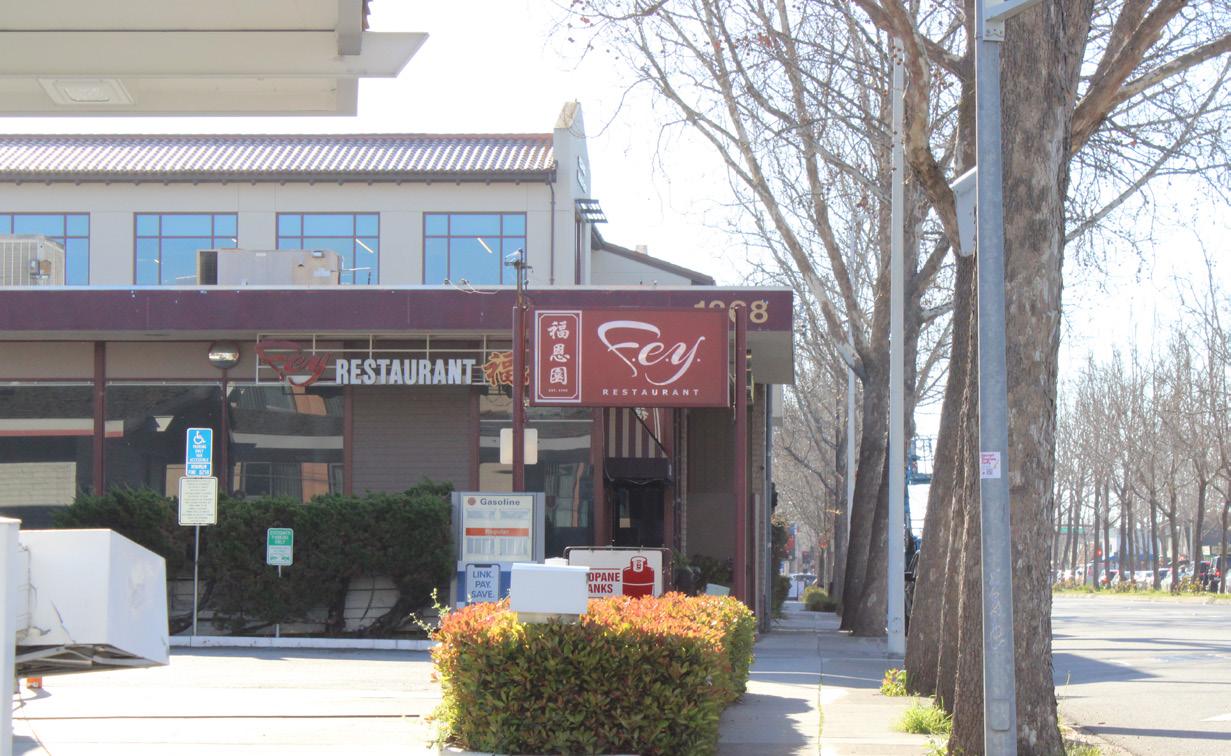
main drag and visible to everyone traveling this historic route,” Barry Synoground, the Guild’s general manager, said.
Being on one of the busiest roads makes offering parking difficult. “We are lucky that we have a pretty big parking lot at Celia’s because there are a lot of strict rules when it comes to parking on El Camino and just on the streets of Menlo Park in general,” Robles said. “If there’s no parking available, then customers tend to leave because there’s no other options.”

Vasi had no significant complaints about Fambrini’s current location. “If there were a change in the El Camino stretch, additional parking would be needed,” he noted.
Just down the road at 1010 El Camino Real in Menlo Park, Kepler’s Books benefits from its underground parking and proximity to the CalTrain station and popular businesses like Cafe Borrone. “It’s pretty walkable and really safe,” Jasmine Valandani, children’s team manager and


buyer at Kepler’s, said. “It’s close to the CalTrain, and we have easy parking. But, there aren’t really bike lanes, and you don’t see many people walking on El Camino. I would love for the area to feel a lot more bicycle-friendly.”
Kendra Calvert, the Menlo Park public engagement manager, shared her input on behalf of the Community Development Department staff. The CDD has a General and Specific Plan, which are legal documents required by the State to plan the use of city land. “The Specific Plan’s design standards, development regulations, and policies help implement these principles. As Menlo Park continues to evolve, future changes will involve a careful balance of benefits and impacts, as charted in the General Plan goals, policies, and programs,” Calvert said.
Foot traffic is crucial for the Guild Theatre, as many tickets are sold through their box office window. “I think people enjoy the personal touch of talking to a person, picking a seat, and getting a physical ticket,” Synoground said.
At Kepler’s Books, Valandani observed that while their location is walkable, El Camino lacks short-distance pedestrian activity. “Even though it’s safe to walk around here, you don’t really see people walking on El Camino,” Valandani said.
Many business owners are interested in an improvement in accessibility to drive customers to their stores. “For pedestrian safety, I feel like there should be more traffic lights and crosswalks just to
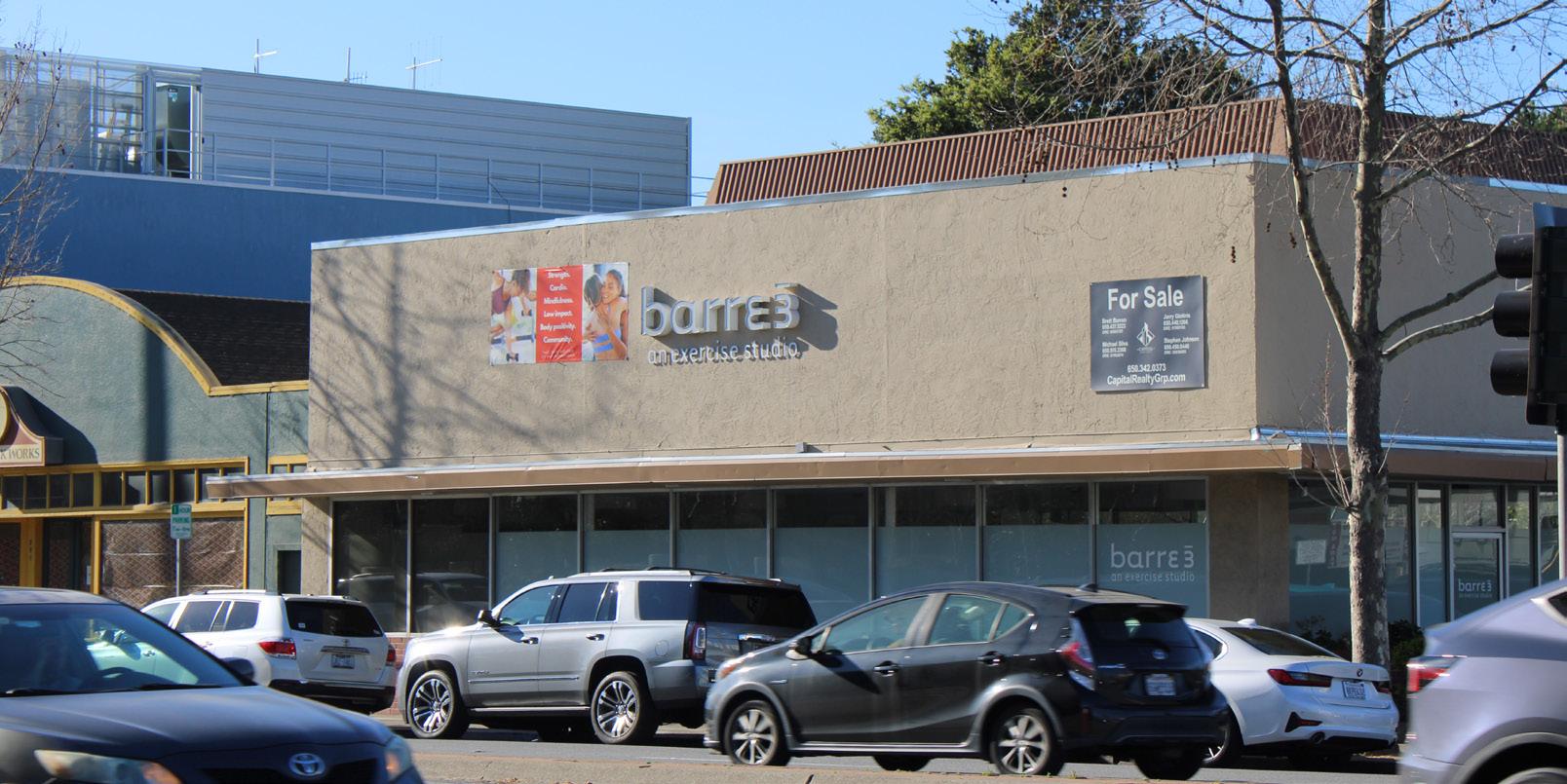
slow cars down and make the area safer,” Robles said.
Menlo Park officials have recognized these concerns and are working on specific improvements. “Currently, city staff have been directed by the City Council to focus on designing and implementing improvements to pedestrian and bicycle crossings of El Camino Real at multiple intersections, including completing missing crosswalks at Ravenswood, Encinal, and Roble Avenues,” Calvert said.
Kepler’s Books has been a part of Menlo Park’s community since 1955 and has held its current location since 1993. Since then, many large technology companies have been founded in Menlo Park, which has boosted the local economy. “We partner with different businesses and do special bulk orders for them, which probably helps our sales,” she said.
The Guild Theater also thrives on local development, with nearly 90% of its ticket buyers coming from a five-mile radius. “We are satisfying a hyper-local need for entertainment,” Synoground said. “Since we are an entertainment establishment that serves the public, the more development near us, the better, as we expand
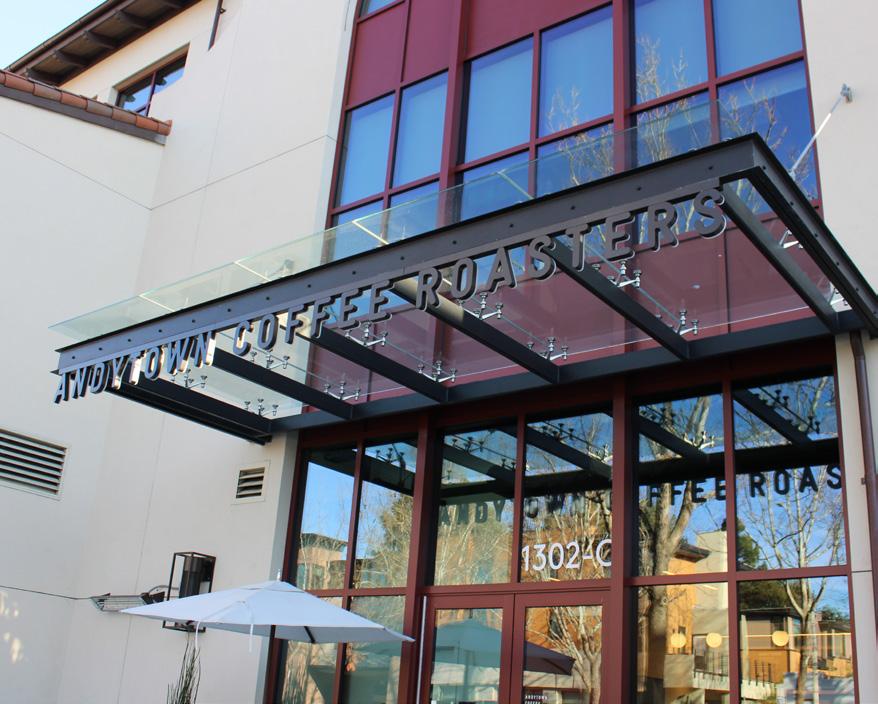
our potential customer pool.”
The City works with local businesses and residents to shape Menlo Park’s growth through public meetings, email subscriptions, social media, and pop-up events. “We also host office hours to answer questions from community members, and the City incorporates feedback from community members to balance and shape Menlo Park’s future,” Calvert said. by Ellie Rosen designed by Bailey Lanier and Zara Parekh illustrated by Bailey Lanier photos courtesy of Celine Chien



Shiok Singapore Kitchen, a cherished restaurant in downtown Menlo Park for the past 25 years, closed its doors on Feb. 18.
Owner Dennis Lim explained that although the restaurant had consistently been paying rent, the landowners recently sold the building and gave Shiok 30 days to vacate. Two neighboring businesses—Ela Lingerie, an 18-year-old store, and Gerry’s Cakes, a 40-year-old establishment—also had to vacate.
“They just don’t have any regard for us. On Christmas day, they tell you, ‘Hey, I sold the building.’ Then a day later, they say, ‘I need you to vacate in 30 days,’” Lim said. “We have a livelihood, my staff has a livelihood, everyone does.”
“They treat you like garbage. They take your rent for 25 years, but the moment they don’t need you, they say to get out in 30 days. It’s just business, I suppose,” he continued.
The M-A Chronicle contacted the building representative agent but they didn’t respond in time for the publication of the article.
While the three businesses were originally ordered to close on Jan. 26, they were later given an extra three weeks, up to Feb. 18. “It was a relief, but it didn’t solve the problem that we were getting kicked out in 60 days. But the 30 extra days really helped me be able to organize people to come and remove the things,” Lim said. “Before, I didn’t even have time to organize for movers to move the stuff out of this space, but they


wanted me to empty the space.”
“It gave me time to let my customers know that I’m leaving and collect emails to keep in touch with them. It also allowed me to go and find a kitchen to cook out of for takeout and catering, which allows me to still continue to pay my staff,” Lim said. “With the takeout place, I will probably still lose money, but at least I can keep my team together. That’s crucial for me, because otherwise I will not be able to reopen and find a place in three or six months’ time.”
The family-owned restaurant originated in San Carlos in 1999 under Lim’s
“Our business has always been a family business. Everybody works here—our friends, friends of friends, family, neighbors, neighbors’ kids.”
—OWNER DENNIS LIM
mother, Rosalind Tan, and his sister, when there wasn’t much authentic Singaporean cuisine in the area. “When people tried this food for the first time, they loved it. And they said, ‘We don’t have anything like this in the Bay Area, you guys should open a restaurant,’” Lim said.
But, as the establishment grew in popularity, they needed to relocate to a larger building. The family soon moved to downtown Menlo Park in 2000, and Shiok Singapore Kitchen quickly became a local favorite.
“Our business has always been a family business. Everybody works here—our friends, friends of friends, family, neighbors, neighbors’ kids. It’s always been that way, and being here for 25 years has been great because we’ve been here so long that we’re a part of the community,” Lim explained.

“I was still holding some hope that we could move somewhere. But it just doesn’t look like it. Not this fast,” he said.
Yacop Halim worked at Shiok around 20 years ago. “I actually still haven’t processed what’s happening here. This is almost like a comfort food or home-cooking spot,” Halim said.
“I’ve been coming to Shiok for as long as I can remember. Since 2013, so since I was five years old,” customer Aaron Chung said. “It was always where I wanted to go whenever we were deciding which restaurant to go to.”
“In the Bay Area, before COVID, there were only two genuine Singaporean restaurants. After COVID, one of them closed, so this is kind of the last existing Singaporean restaurant in the area,” customer
Ana Chung said.
Despite the closure, they hope to reopen in a new physical location someday. In the meantime, they plan to continue offering takeout via Uber Eats, DoorDash, and their website.
“We have promised to support them even when they are doing delivery or online,” customer Jay Chung said.
“Hopefully they keep cooking. Where they are, I’m going to track them down,” Halim said.
“Because most of my customers are in Menlo Park, I would love to continue my business here. If I can find another location that has the right region and right size,” Lim said.
Lim and Tan wanted to give parting words to their customers. “I just want to say thank you. Thank you for sup porting us for the past 25 years. Even during COVID, we shut down for two years, but we survived it because of the neighborhood, and because the customers kept ordering from us. The community has been a big part of why we have been able to stay in business for so long,” Lim said.
Lim has set up a crowdfunding campaign, selling meals in advance in order to help start up his takeout kitchen. You can find it at Indiegogo.com.
by Lindsay Park designed by Micaela Rubinsky photos courtesy of Lilia Wilkiewicz and Lindsay Park
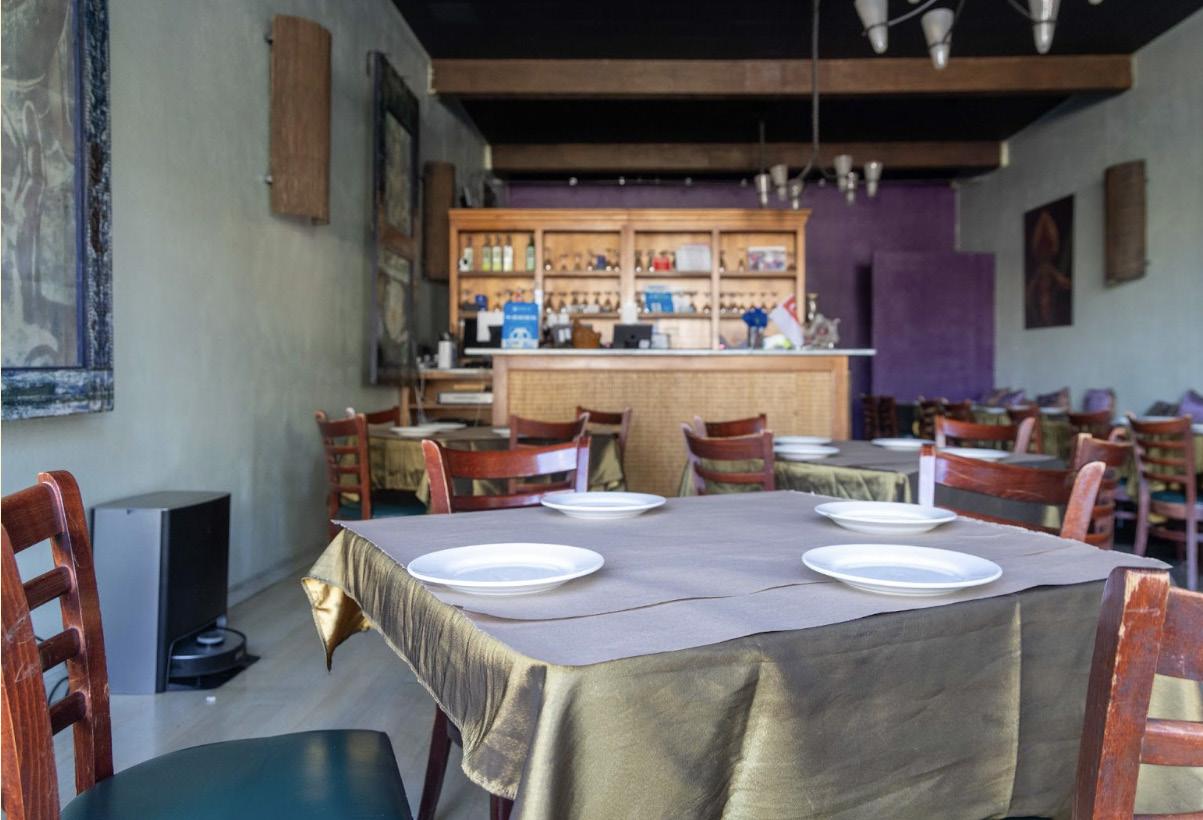




“
Nextdoor is different from other social networking sites because it was built from the ground up to help neighbors come together in a trusted environment,” Nextdoor board member Bill Gurley said in 2011.
Today, however, many Nextdoor users don’t think the app has achieved this goal. “Nextdoor should be allowed to operate but only with the tagline ‘The Rage Page’ displayed prominently above the typographic logo,” user Lori Hobson posted on the site.
Over the past 15 years, Nextdoor has grown from a communication platform for tight-knit neighborhoods to a global powerhouse: 45.8 million use the app weekly across 11 countries. In the U.S., over 260,000 neighborhoods use Nextdoor.
One month ago, I posted a message asking for comments on the pros and cons of using Nextdoor. Within two weeks, the post had 146 comments, detailing everything from elitism and oversharing to a bickering match between two users where one tried to ban the other. Users brought up dozens of issues, including neighborhood anonymity, extreme responses, excessive complaining, and moderation conflicts.
Since its start, social media has provided users with anonymity, allowing them to berate others with limited consequences. Nextdoor’s premise attempts to avoid this culture by creating a “neighborhood community,” but over the years, it has essentially become an another anonymous platform.
Nextdoor started in 2010, with its original “beta test” neighborhood, Lorelei Manor, being less than five minutes from M-A. I interviewed Margarita Mendez, a Lorelei resident who was an original user during the beta test.
“Our neighborhood was 87 houses, and we were really tightknit,” Mendez said. “One of our neighbors was friends with one of the engineers of Nextdoor when they were starting, and they were looking for a neighborhood pilot for their original idea. Originally, we had a private ‘only us’ communication, and we thought that’s what it was going to stay as.”
Today, hardly anyone in Lorelei uses Nextdoor. What started as a place for neighbors to share images and find house sitters was soon overridden with a new—and largely anonymous—network of users, pushing Lorelei residents away from the app. Mendez explained how, originally, people joining Nextdoor needed to submit official proof of residence and could only see and post within a small radius of fewer than 90 homes. Now, neighborhood radii have grown larger, encompassing entire cities. Users can limit their radius but still see popular posts beyond their neighborhood. To
their location to prove they are in the vicinity.
In a poll of 68 Bay Area Nextdoor users, nearly 70% said they “rarely” or “never” see posts from people they recognize on Nextdoor, and only 5% said they often see posts from people they know.
When signing up for Nextdoor, many use only their first names, opting for virtual anonymity even within their own neighborhoods. This creates a breeding ground for the abuse and bullying that plague the platform.
In Menlo Park, the prospective affordable housing units downtown have sparked outrage and debate among many users. Mendez, who still occasionally uses Nextdoor, described her experience reading these comments.
“Hearing people saying things about our potential neighbors is really disheartening. I saw people talking about people who look like me or have professions like mine and thinking that we’re not worthy,” Mendez, a public school teacher, said.
“People have this veil of anonymity behind them, especially if their name isn’t their real name. They just can say whatever they want to, and it’s a really sad commentary on our culture,” Bay Area user and former moderator Katharine Sherwin said.
“Somebody will say, ‘My dog died, and I want to get another Labrador Retriever. Does anybody know any good breeders?’ You would think that would be pretty innocuous, right? Well, the next thing you would see is 15 comments from people outraged about ‘Why are you trying to find a purebred dog when there are all these dogs in the shelter?’” Sherwin said.
An original negative comment can quickly spiral into something much more controversial because the algorithm favors posts with higher engagement. This generates more and more comments, and users’ complaints or requests for advice can get hundreds of of responses, each more extreme than the last.
When Nextdoor users have problems with their neighbors or the local community, many go to the app instead of facing the conflict head-on. For example, in a popular Nextdoor thread that circulated in 2024, a user posted about their neighbor’s early leaf-blowing without ever having a conversation with that neighbor. This led to a 94-comment message thread.
“Back in my day, we had a next-door neighbor. It wasn’t an app, it was called being human, socializing, saying hello, or telling someone to their face that something they are doing isn’t good or fair to the local community,” commented Nextdoor user Johnathan Z.

User 1
Your comment is what is wrong with Nextdoor. Sheesh! Tell me you’re a boomer without telling me!!!
User 2
Moderator
She’s not monitoring Nextdoor and this is possibly now a creatorabandoned post that just happens to have generated a life of its own thanks to Nextdoor’s activity algorithm.
User 1
This part of the conversation is so absolutely annoying that I’m angry with myself for even commenting. I feel it is a waste of my time, personally.
Nextdoor invites certain users to become volunteer “moderators” based on their activity levels and posts, allowing them to take down problematic content that violates Nextdoor’s guidelines.
Guidelines include being respectful, using your true identity, and not discriminating or engaging in “harmful activity.” Moderators flag posts that clearly violate guidelines like selling banned items or, until recently, advertising personal services.
“Somebody posted, ‘Somebody was casing my house last night, and here’s their picture on my ring doorbell.’ People jumped on that, making derogatory comments about the color of their skin and saying, ‘Of course, they should be locked up,’” Sherwin said.
For a post to be taken down, moderators—who are often not local—vote over a long period of time.
“I would vote one way, and then I see a list of like 15 other people voting. The post would stay up during all of that time until enough people voted one way or the other. Often, it would be a really egregious post but would stay up for two weeks,” Sherwin said.
“Our communities are so divided now on what information is true and what is made up or exaggerated that the moderators have an impossible job. How do you moderate when your neighbors differ on what is real?” Nelson said.
Tallying up all 146 comments on my post, I received roughly 80 comments that were generally negative, 40 that included both positives and negatives, and 25 that were generally positive. The question then becomes: how often is Nextdoor at its worst, best, or in between? To answer, I turned once again to the comment thread.
“I would say it's probably 30% positive and 70% negative, partially because it includes so many ads,” Sherwin said. “I only go on maybe one or two times a week at the very most, and I used to check it every day.”
Others had a much more positive response. “I really like it! I don't always agree with my neighbors, but have learned a lot about them through this app, and have gotten some great advice about local beaches, events, and emergencies. It's great, almost necessary, for locating lost pets, and also a place to buy, sell, trade, and give



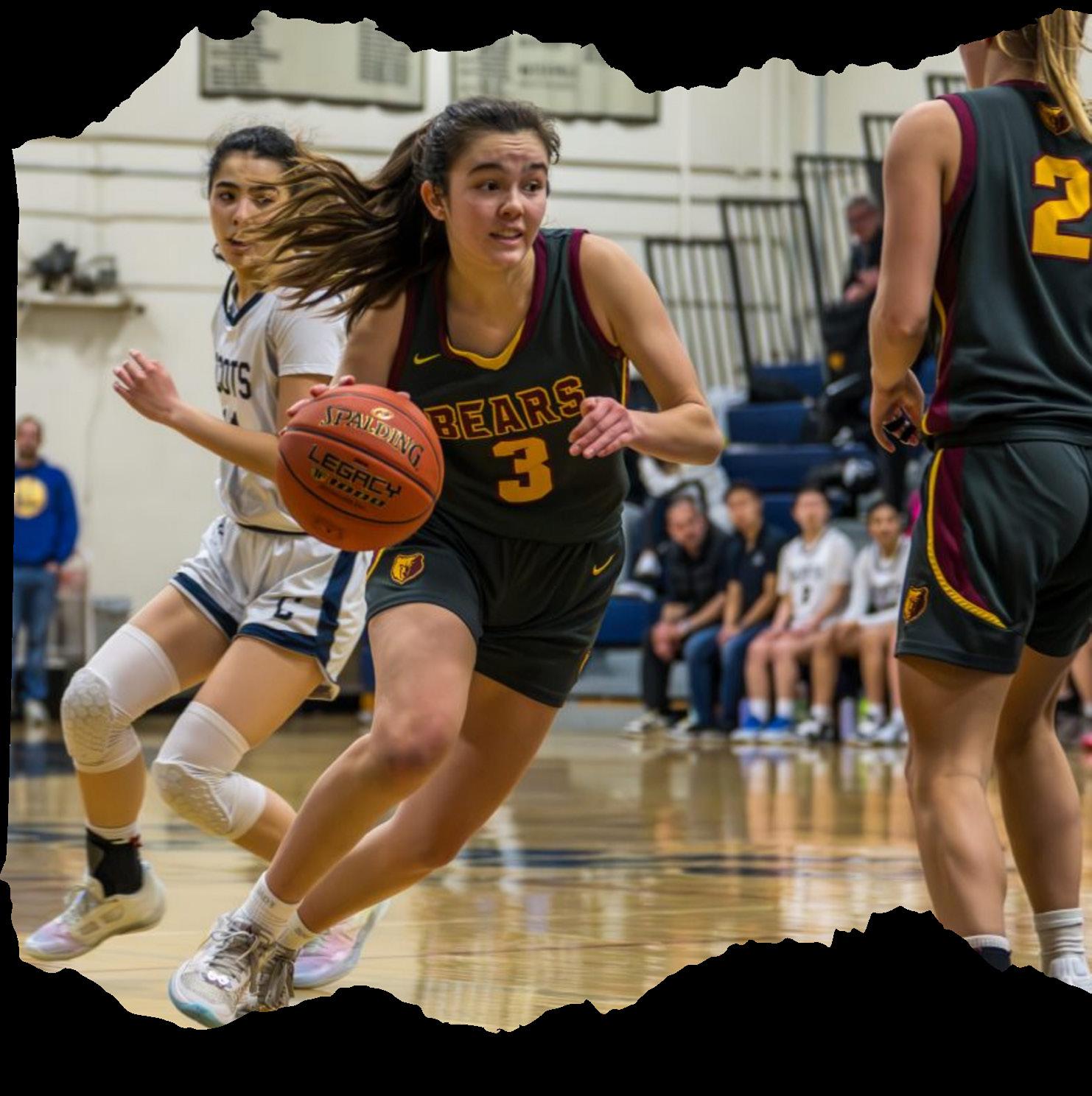


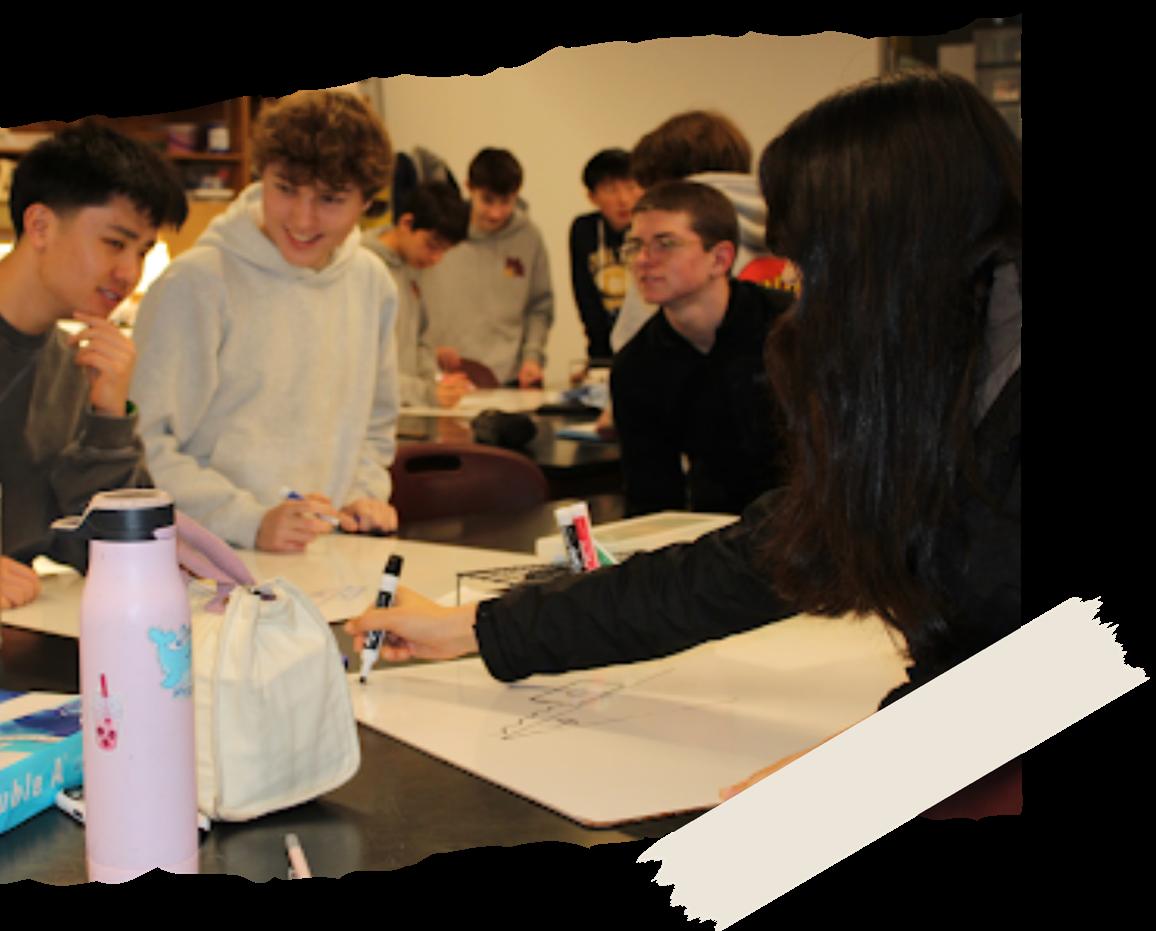



District Trustee Carrie Du Bois stepped down this January after 14 years of service. Throughout her time on the board, Du Bois focused on building community, supporting teachers, and advocating for at-risk students. She represented Area B, which includes parts of Belmont, San Carlos, and Redwood City. She also served as Board president from 2017 to 2021.
Before joining the District Board of Trustees, Du Bois served two terms on the board of the San Carlos Elementary School District, where her son attended school. She held both member and president positions during her tenure. She was also president of the San Mateo School Boards Association and the elected delegate to the California School Boards Association assembly.
While volunteering with the Parent Teacher Association at SCESD in 2005, Du Bois noticed funding disparities between San Carlos and other school districts. “At the time, the San Carlos Educational Foundation didn’t raise very much money,” she said. “Menlo Park City School District was raising probably $2 million, whereas San Carlos was just raising $15,000.”
In response, Du Bois began working with the East Palo Alto Rosalie Rendu Center, a project focused on supporting immigrant moms, which allowed her to build meaningful relationships with communities in East Palo Alto. At the time, high school students from EPA were bussed to Carlmont. “I knew that was a really rocky transition for East Palo Alto families, so as a volunteer, I tried to get involved in making the transition easier,” Du Bois said. “That made me shift my focus to the high school district because I was really passionate about blending communities, so I ran for a position on the Board.”
Du Bois aimed to advocate for struggling students as well as homeless and foster youth across the district.
One of Du Bois’ most notable achievements has been her advocacy for trauma-informed learning throughout the District. “Kids who have been through a lot of trauma sometimes will have behavior problems or challenges in the classroom. Our whole District now is very trauma-informed,” she explained. “Student Services has really been reworked.”
Given the last decade’s tumultuousness for the District, Du Bois’ tenure was not without its challenges. During the pandemic, community members clashed over returning to school. Then-Board president, Du Bois played an essential role in the return to in-person learning.
“Sequoia was not able to open easily. We had some community groups demanding that we reopen, but there were other communities that didn’t want to reopen,” she said. “During COVID, there were a lot of teachers and people in low-income communities who did not want to go back.”
After the pandemic, the debate over detracking surged in prominence. “I changed my thinking on it after talking to a lot of educators,” she explained. “Educators that I highly regard believe that when you segregate kids, they do not do as well.

I trust them because I believe teachers don’t do things that are bad for kids.”
As a trustee, Du Bois presided over countless late-night board meetings filled with shouting community members. “It was a very rewarding experience to be a school board member. It wasn’t easy. Thinking of all the volunteer work I’ve done over 30 years, serving as a school board member has been one of the most difficult jobs, if not the most difficult job,” Du Bois said.
Du Bois voiced her concerns about the teacher shortage in California and the lack of support offered to educators. “A lot of teachers don’t last in the profession, and now we have a problem with people not going into the profession of teaching,” she said. “I believe that it’s best for kids when teachers are really well supported.”
This emphasis on communication with teachers led her to endorse Mary Beth Thompson, an educator now taking Du Bois’ seat, in the recent Board election. “For the person taking my board seat, I was really hoping for an educator, and that’s what I got with Mary Beth Thompson.”
As Du Bois’ journey as a trustee comes to an end, she hopes M-A’s community continues to grow and support teachers. “It’s important to support our schools rather than criticizing them. Across our country, if we want to have educators, it works better when you go and ask what they need, and get it to them,” she said.
Shawneece Stevenson departed from her position as a District Trustee after four years of service. During her tenure, she worked to increase community engagement, support underrepresented students, and promote equity across the District. Stevenson represented Area E, which includes parts of East Palo Alto, Menlo Park, North Fair Oaks, and Redwood City.
Stevenson was initially asked to run for the Board after attending a few meetings to provide input as a parent. Though she had never previously considered the position, Stevenson ran to advocate for others. “I wanted to have more impact within our school based on some experiences I was having,” she said.
In addition to founding her own private wellness consultation company, working as a family success coach, and being on the Bay Area Community Health Advisory Council, Stevenson is a trained social worker.
“My particular skill set as a social worker is dealing with crises and more immediate needs, navigating challenging situations, and really keeping people whole in the end so that everybody’s not wounded by the time we get through. I thought it would be a good skill to have on the Board,” she said.
Stevenson was a part of making many decisions regarding District infrastructure improvement, expanding the Middle College program, educational equity initiatives, and COVID-19 policies. “I really liked making decisions, bringing a different perspective to things, and putting faces and names to not just those who show up, but those who don’t show up,” she said.
“When I first came on the Board, my goal was community engagement. Folks in my community area didn’t strongly connect with our District,” she said. While on the Board, Stevenson has also been recognized for her dedication to M-A’s Foundation for the Future and her support for local Black Student Unions.
Stevenson went out of her way to understand the perspectives of her community members, especially those who couldn’t share their views at Board meetings, such as students or working parents. “I’m not representing myself, I am representing many types of people who may be impacted in all kinds of ways, and I need to make sure I’m looking at each problem from all perspectives,” she said.
Since all three of her children graduated from M-A, Stevenson enjoyed getting to know the entire District education system on a deeper level through her position on the Board. “Being able to really understand the lay of the land and each uniqueness and niche of each school site was fascinating and helped me have an appreciation and understanding beyond M-A,” Stevenson added.
Stevenson reflected on the difficulty of having tense discussions as a Board. “I can only really have a conversation if it’s on the agenda and it’s only with my Board members. Everybody else is watching you, giving you input, and telling us what we did well or didn’t do well. That’s not really how you have a conversation,” she said.
Many of the Board’s pivotal decisions elicited pushback, and Stevenson embraced it. “For any of the big decisions that I needed to
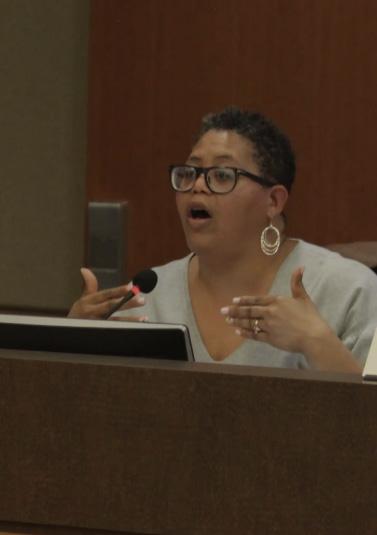
make, I always talked to the people who were for it and the people who were against it, not just the people who were in the meetings,” she said.
Stevenson decided against running for reelection so she could focus on spending more time with her family after experiencing personal losses over the past year. She continues to work with her own wellness consultation business, as well as working on community engagement and parent coaching.

“I did the work that I was supposed to, and that was to raise the reputation of SUHSD within Area E so that people feel more connected, more engaged, and that people knew they had someone who was going to listen to them,” Stevenson said. “I felt good leaving, I feel good acknowledging all the hard work that people have been doing, and I feel good providing perspective and feedback to people when they ask.”
In the future, Stevenson hopes that Board members will continue to prioritize understanding all perspectives and focus on supporting students. “I want our schools and our kids to have all the opportunities that they can have, so they can be our future,” she said.
M-A and SamTrans must improve communication to protect students and ensure attendance.

“If I had it my way, I would never take the bus. But I have no choice,” junior Eva Ama said. For many students like Ama, skipping the SamTrans bus isn’t an option. M-A serves five different cities, with some students commuting over six miles from the hills of Ladera and the pockets of Redwood City to get to school.
While some school districts field their own fleet of buses, many Bay Area high schools, including M-A, rely on public buses for transportation to and from campus.
SamTrans serves 12 of San Mateo County’s 27 public high schools. However, its scale and nearly 200 million dollars of funding don’t guarantee quality.
From frequent delays to overcrowding and intimidation by non-students, many M-A students find taking the bus a daily challenge. Current policy requires students to take the initiative in reporting incidents for them to be addressed, causing many serious issues to go unaddressed, harming students’ attendance and safety.

SamTrans must work to improve riding conditions by encouraging bus drivers to resolve conflicts and collaborate with school administrators to troubleshoot problems as they occur. More importantly, M-A’s administration needs to improve communication and incident reporting to empower students to advocate M-A Chronicle survey of 257 juniors, 58 reported taking the bus to school. Over two-thirds of students who take the bus said that it caused them to be late to school at least twice a week.
Junior Jasmine Tupe takes the 296 every day with her sister, sophomore Dahlia Tupe. For them, the bus is almost always late. “We’ve been marked tardy because of the bus almost every single time we take it,” Jasmine said. “The bus is often running late, and there usually aren’t enough routes or buses to accommodate every student in an efficient manner. I only rely on the bus as a last-ditch resort because of the hassle,” Kevin*, who takes the 86 bus, said.
Students said that tardiness on the bus has affected their perfor-
mance in class. “I came a few minutes late for a test because of the bus, and the teacher took a few points off because of my lateness. I was pretty annoyed because I felt like my lateness was out of my control,” junior Amir Bonner said.
“The first 10 to 15 minutes of my first period are really important because that’s when we go over class instructions. When I arrive late because of the bus, I feel like I’m struggling just to keep up,” Ama said.
Studies have shown that tardiness is linked to lower academic achievement and high school graduation rates.
Almost every student interviewed who takes the 296 complained about the buses being too small and crowded.
“The shoving. It just has to stop,” sophomore Jada Grable said. “They grab your backpack and pull you back because they want to get a seat.”
“You always hurt yourself to get on the bus,” sophomore Estefani Cruz said.
“Last February, I had a bad ankle sprain, and I still had to take the bus. Everybody would rush to the bus, and I was on crutches, so I would get pushed around. I had a boot, and two weeks in, my boot broke because of people stepping around on the bus,” sophomore Sileih Robinson said.
Almost all students interviewed taking the 296 and 81 buses complained about the smell. “Kids are always smoking in the back. It’s a confined space, so you can smell everything, it gets in your nostrils. You can’t breathe at all,” Grable said. “The driver doesn’t do anything. They don’t really care. It’s like this almost every day.”
Students also mentioned facing harassment and fearing for their safety on the bus.
Last year, Robinson encountered a man verbally attacking students on her bus ride home. “He was talking about how Mexicans shouldn’t be on the bus and how they shouldn’t be in America,” she said.
“I tried to ignore it, but he just kept going,” Robinson continued. “He was talking to students who didn’t understand English, so they didn’t know what he was saying. He was just yelling at them,” she said. “The driver looked back a couple of times, but he didn’t say anything.”
“The bus can be dangerous. It’s not like every single day it’s something, but again, on the 296, because of where it goes and how far it stretches, you do encounter unhoused people, depending on the time of day,” junior Eboni Freeman, who has been taking the 296 for three years, said.
“One time, this homeless guy was harassing me and my friend, and the bus driver needed to call the cops because he tried to attack us,” junior Sophia*, who takes the 81, said.
Junior Bella*, who also takes the 81, described a man who followed her and her friend off the bus. “The whole time we were on it, he was staring at us,” she said. “There are times when random fights seem to break out, or the loud ar-
“The shoving. It just has to stop. They grab your backpack and pull you back because they want to get a seat.”
SOPHOMORE JADA GRABLE
guments people have in the back make it hard to feel safe.” Bella noted that more serious incidents like these happen once or twice a month.
Under the U.S. in loco parentis doctrine, schools can take responsibility for students’ safety going to and from school, meaning that schools are involved in resolving student conflicts or incidents that occur on the bus.
However, the only way for M-A to address issues on the bus is to receive reports from SamTrans bus drivers or students.
Bus drivers are liable for reporting incidents that occur on the bus, but SamTrans Government and Community Affairs Manager Ana Vasudeo explained that it’s difficult for drivers to enforce SamTrans’ code of conduct on their buses. “The rules are all listed there, and they’re all enforced, but it’s hard sometimes for the operators to observe everything that’s happening on the bus. They’re looking at the road, and they’re driving,” she said.
In case of an emergency, like a hijacking or robbery, SamTrans drivers pull
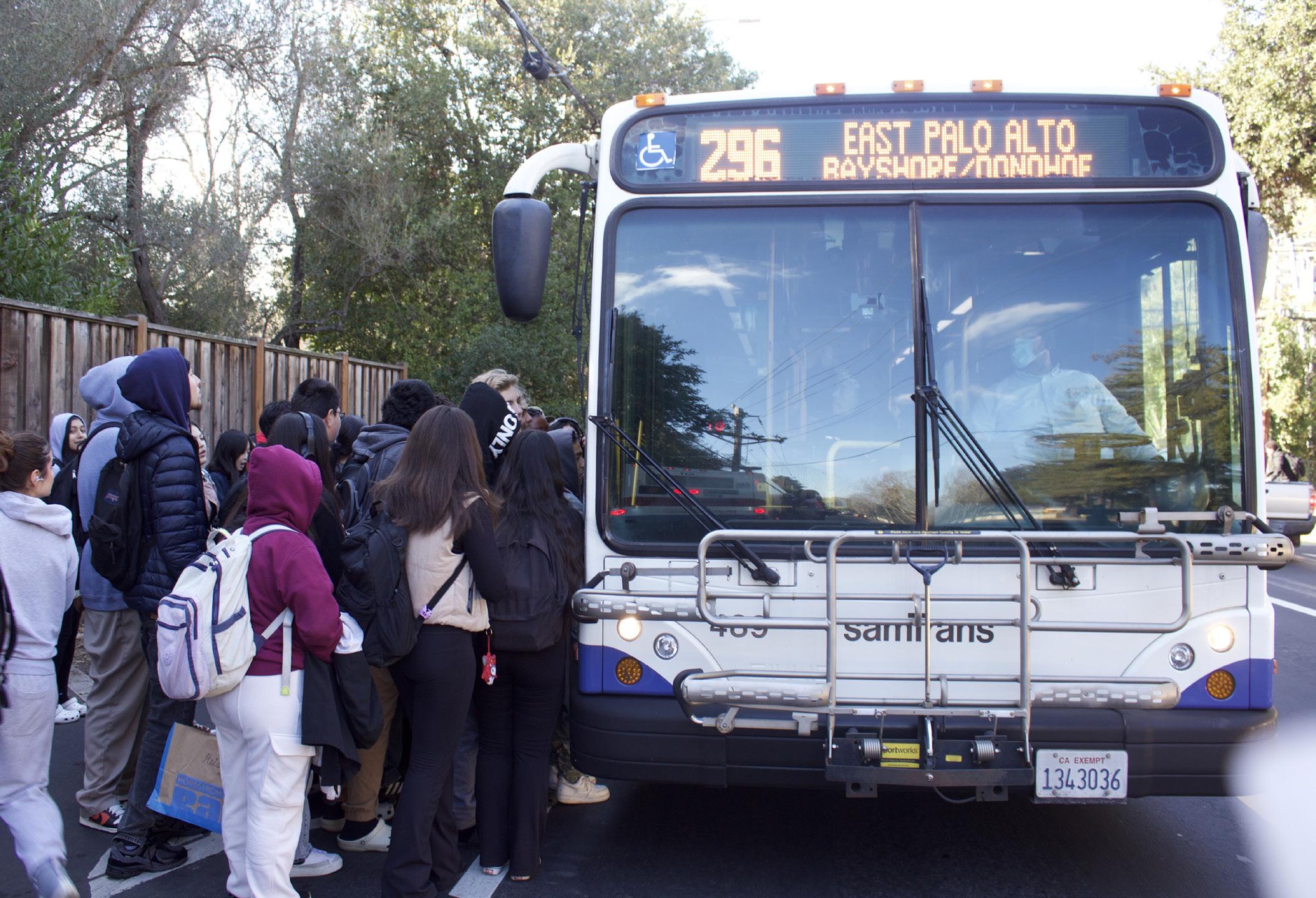
In case of an emergency, like a hijacking or robbery, SamTrans drivers pull over and dispatch transit police. Smaller incidents, though, are rarely reported.
As a result, M-A relies on student and passenger reports to find out about issues with bus congestion and safety before addressing them. This places the burden of reporting incidents on students without any clear guidelines on how or where to do so.
Some SamTrans buses have small posters that detail reporting procedures. Many students interviewed said they’d never noticed these posters and wouldn’t know what to do or who to contact if an incident occurred on the bus.
While M-A offers an anonymous student help line on its website, the resource isn’t clearly advertised as a place to report incidents outside of school, like on the bus.
After Robinson encountered the man who verbally harassed students on the bus, she didn’t know how to report it.
“It’s a public bus, so I get that there will be some people who act like that,” she said. Many of these daily occurrences, like overcrowding and drug use, have become normalized, which may discourage students from reporting them. “Sometimes you just adapt to it,” Robinson said. “Some people might report it when it gets really bad, but most people are used to it because they ride the bus every day.”
“I have never told [M-A administrators] because I never thought it was a big issue, and I don’t really think they could do much about it,” Bonner said.
Without student reports, M-A administrators don’t know about these incidents.
Administrative Vice Principal Elaine Rivera-Rios said she has never received a report from students or SamTrans. “It’s unknown to us. We don’t get that information. Not because we can’t, but because nobody’s telling us,” she said.
While Rios noted that M-A’s SamTrans liaison, Lisa Chan, was quick to respond
to some smaller concerns, they have struggled to resolve ongoing problems.
“It feels a little bit unresolved a lot of the time. We hand it off, and they don’t get back to us. Sometimes we’re just like, ‘Okay, we haven’t heard anything new, so does that mean it’s resolved?’”
AVP ELAINE RIVERA RIOS
“A lot of the issues—like being late or missing a drop-off—are met with responses that are more like action steps. They just say, ‘Reach out to operations planning.’ We reach out to them, but there aren’t really any clear next steps.

There’s no indication of how long it will take or what typically happens in these situations,” Rios said.
Rios mentioned that when parents share complaints, she sends an email to the liaison to resolve the issue. “It feels a little bit unresolved a lot of the time,” Rios said. “We hand it off, and they don’t get back to us. Sometimes we’re just like, ‘Okay, we haven’t heard anything new, so does that mean it’s resolved?’”
Administrators need to clarify communication systems so students can stay informed on incidents that happen on the bus and contact SamTrans to resolve them.
Rios said she is open to this change. “The challenge is getting information in a timely manner. Maybe part of the solution is providing bus drivers with our school number and instructions on how
to reach us if something happens. That could be an interim step while working toward a more long-term plan,” she said.
Administrators also need to improve communication with families about safety and bus arrival times. AVP secretary Roxana Fuentes, who is responsible for communicating with the SamTrans liaison, wishes for clearer, more consistent time updates. “Whenever it’s late after school, they don’t notify us,” she said. Currently, these notifications only come in the mornings, not during the afternoon when students are traveling home, so families and students don’t know when they’ll be arriving home.
SamTrans must review its routes to identify ones that are often late and either add buses to those routes or adjust timetables to ensure students consistently arrive on time.
“Taking the bus makes me want to come to school less,” junior Carter Ard said. “If that’s my only way of transportation, then
I’m not going to school.”
Every student deserves to get to school on time. A responsible community should provide a safe and reliable method for its students to do so.
*The names of these interviewees are pseudonyms because they responded to an anonymous survey.
by the M-A Chronicle Editorial Board Celine Chien and Mateo Cuellar-Koh were the lead authors of this article. designed by Teagan Murphy photos courtesy of Celine Chien and Tatiola Sobomehin






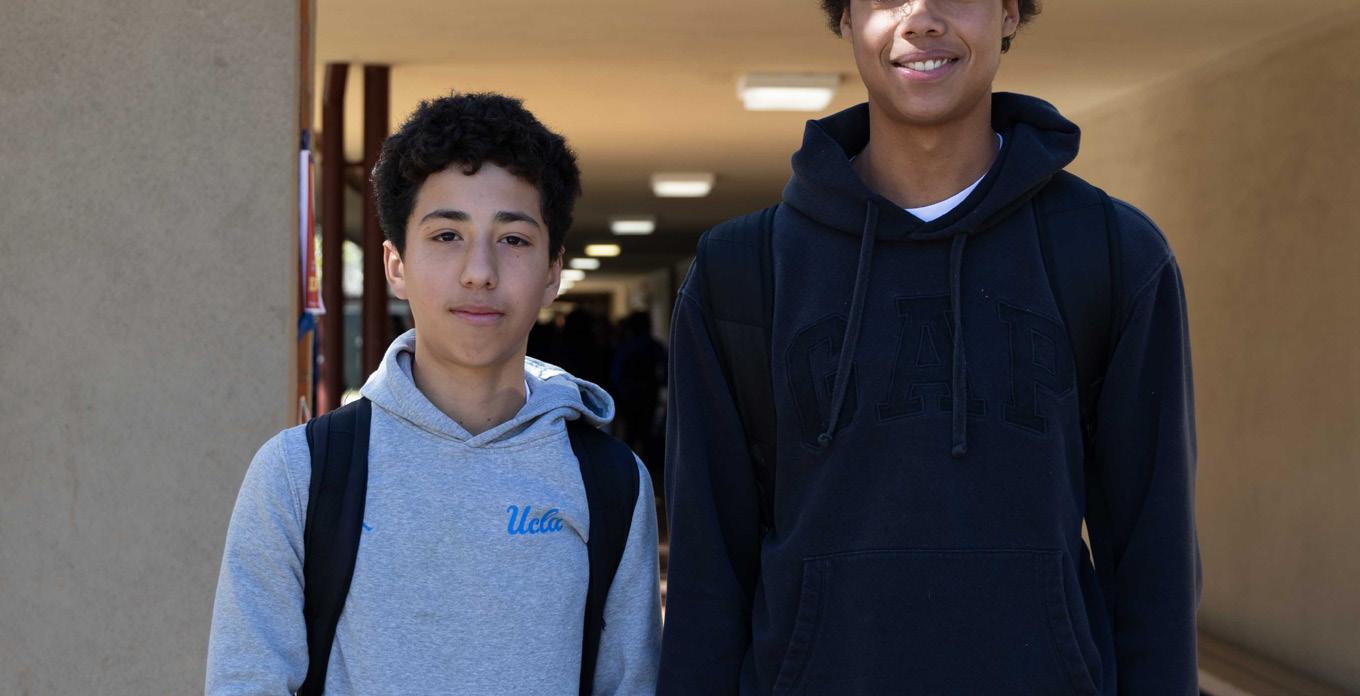





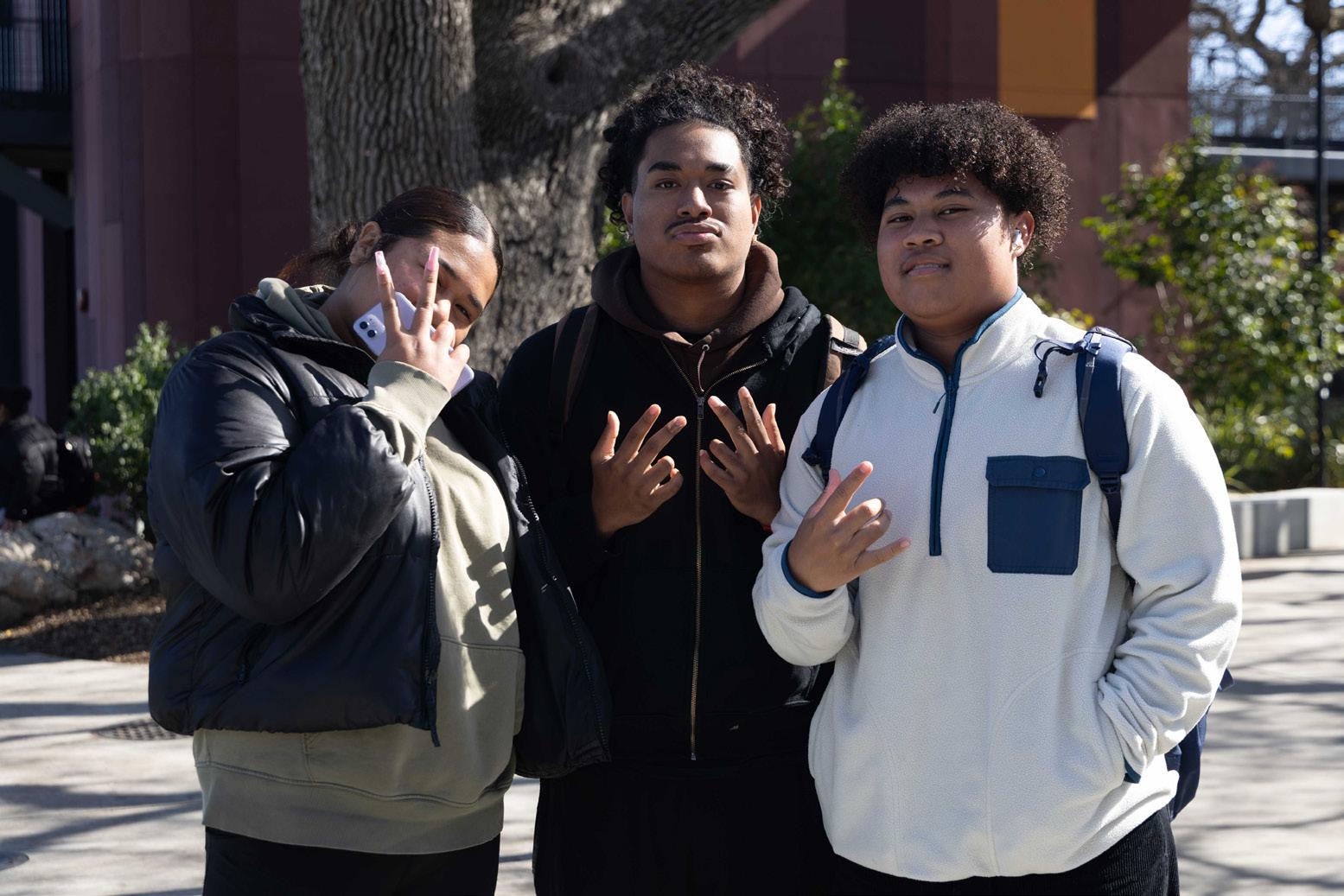


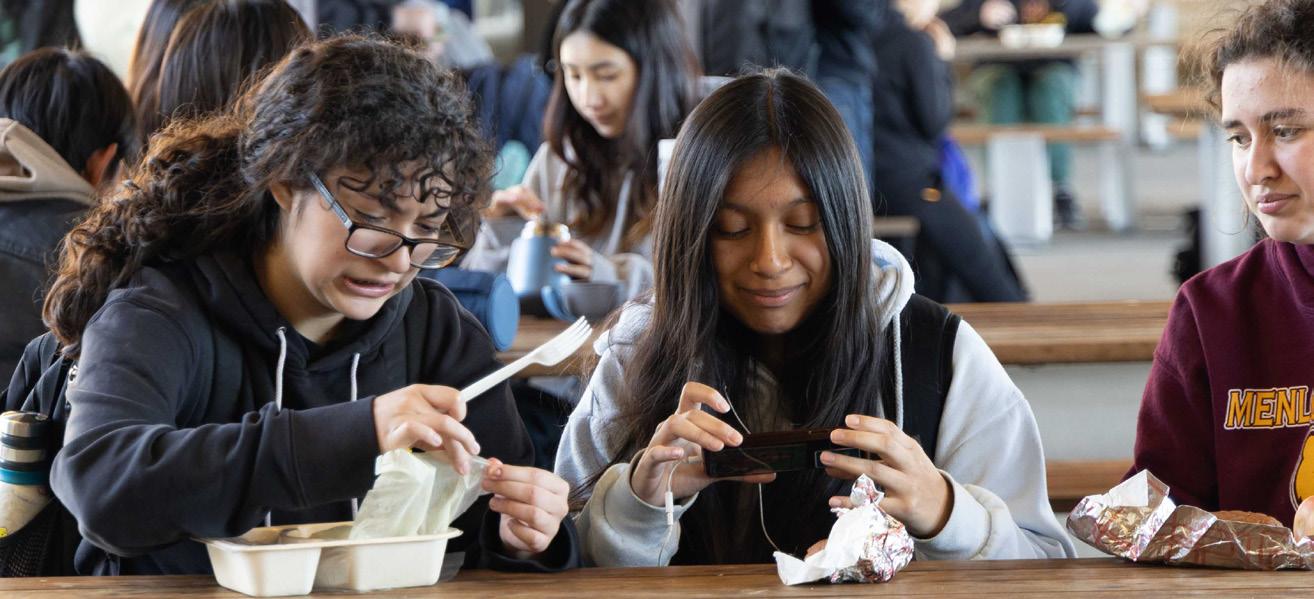



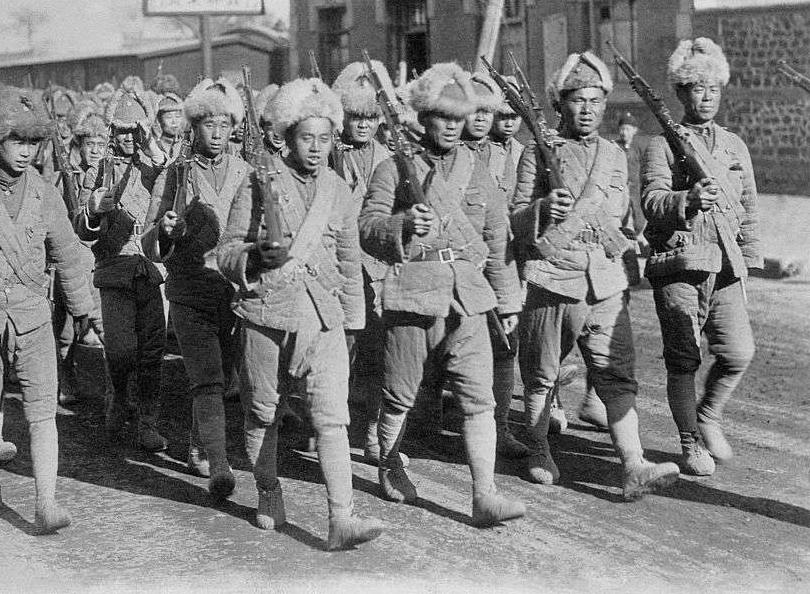





M-A made a substantial curriculum change in 2022, replacing the sophomore European history courses with classes about world history. This allowed AP teachers to teach more Asian history, rather than focusing solely on Europe. Many Asian students appreciate the new curriculum’s attention to their cultural backgrounds.
Prior to this change, students had the option to take Modern European History or AP European History as their sophomore history class. M-A replaced the required freshman World Studies class with Ethnic Studies in 2021, so freshmen could take Ethnic Studies and then World History.
Collin Goel, who graduated from M-A in 2024 and took AP Euro as a sophomore, said his history courses at M-A did not sufficiently cover Asian history. “There wasn’t enough focus on Asian students in the curriculum to really have diversity. We went over the Chinese government and the Chinese revolution in World Studies, but it was lacking in depth,” he said.
“It is a bit of a shame because it is nice to know where you come from and the roots of your ancestors,” Goel added. “It’s nice to see yourself represented in the class.”
The emphasis previously placed on European history may have prevented students from understanding other civilizations. Not only is Asia the birthplace of many significant innovations and prevalent religions, but it also plays a crucial part

AP World, on the other hand, brings more attention to Asia. “I definitely think there is a big emphasis on Asian history in the beginning of the class,” AP World teacher Amira Sani said. “It’s not something that’s heavily covered in your mainstream history classes until you get into college.”
Asian history is also a prominent aspect of grade-level World History classes. “Asia gets a pretty heavy emphasis,” World History teacher Jason Knowles said. “We can’t cover every single ethnic group. Japan, China, and India get the most heavy doses, but we cover a little bit of the his-
tory of Korea and a little bit of the history of the Philippines,” he added.
Since the switch to AP World, Asian students interviewed have said they are satisfied with the class’s coverage of Asian history. “The class is focused on learning enough for the AP test, but I think I got a good understanding of a wide range of Asian history,” senior and Asian Culture Club Vice President Claire Chang said.
“There’s history that we’ve learned on our own based on our family or where they’re from,” junior Sumiko Robinson said. “When it comes to AP World History, I think it covers a lot.”
Chang also acknowledged that taking Chinese as a world language elective deepens her knowledge of her own culture. “I learned a lot about culture, calligraphy, and Chinese artists, as well as Chinese foods and holidays,” she said.
Some students still wish the curriculum was more diverse but understand the difficulty of incorporating more perspectives. “I would have liked to see more history about Taiwan and other minority countries that didn’t get covered,” senior Heidi Chen said. “But I think it’s just hard to fit it all in. If regular World History did that, I probably would have taken it.”
Though she was generally satisfied with its Asian history curriculum, Chang had some criticisms of AP World. “In AP history classes, you aren’t really incentivized to truly understand Asian cultures and perspectives. You’re trying to get a five on the AP test, and that often means choosing to have a broader understanding of the history over really diving deep into it,” she said.

There are other ways to learn about Asian culture at M-A beyond history classes. “Besides taking Mandarin in school, I would definitely say you could join the Asian Culture Club or Chinese Culture Club,” Chang said. Through these clubs, members can learn about Asian culture by watching movies, eating traditional snacks, and celebrating cultural festivals like the Lunar New Year. by Colin Lee
designed by Ben Siegel and Siboney Lynch


Many students have at least one passing period where their next class is on the opposite side of campus, which can be difficult to navigate in just five minutes. Late students miss necessary instruction, which can affect their performance in class.
“Most schools have a five to 10-minute passing period,” Administrative Vice Principal Amy Hanson said. Five minutes may work for smaller schools, but it's not sufficient for larger schools like M-A.
For one, not all classes end right when the bell rings. “If a teacher decides that they want to keep us in for a little longer than usual, then that directly affects me getting to my next class on time,” freshman Caroline Pflaum said. After the bell, students have to pack up their bags before walking to their next class.
For junior Lily Jacobi, getting from her AP Environmental Science class in the S-Wing all the way to the end of the E-Wing for AP English Language requires her to run if she doesn’t want to be late. “I feel really under pressure when I’m trying to get to my class, and the teacher yells at me when I’m late, but I physically can’t get to class on time without running,” she said.
For other students, the short passing period adds unnecessary stress, as they rush to get to class or use the restroom. “Sometimes after the bell, my teacher
says, ‘Wait until I’m done talking,’ and then there goes my plans for going to the bathroom during passing period because it’s a tight schedule,” Pflaum said.
Teachers often expect students to be punctual, adding to the stress of arriving on time to class. “We can only go to the bathroom four times in Spanish for each semester, and my teacher always says to go during breaks, but we don’t have time for that during passing periods,” freshman Mia Mackey said.
For many students who have lockers, the lack of time means they rarely get the chance to use them before class, which defeats their purpose. “My locker is on the Green, and my classes are really far away from that, so I never have enough time to get stuff from my locker without being late,” sophomore Cindy Qiao said.
This problem is especially challenging for freshmen and other students enrolled in P.E. because the athletic facilities are far from the main academic wings. “A lot of people from my P.E. have Biology next, which is in C-0, so we start class super late because, for the first five or 10 minutes, people are just coming into class,” Mackey said. “We don’t learn as much because we don’t have enough time.”

struction, which can delay lesson plans.
Hanson expressed concerns about the lack of supervision during a longer passing period.
“The longer we have students out and about, the more we have to monitor, so there needs to be a happy medium. You don’t want the passing period to be too long, but you don’t want it to be too short,” Hanson said.
Many schools in the District have longer passing periods of six or seven minutes to make up for their larger campuses. Carlmont, for example, has a sev en-minute passing period.
Freshman Yoonwon Bae also has P.E. before Biology and struggles to arrive on time. “We have labs where you can’t be late, and it affects my grade,” Bae said. “My Biology teacher says to come earlier and get changed quicker, but I can’t do that.”
In classes on the outer ends of campus, many students miss essential class time and in-
“If your classes are across campus, it definitely takes the whole passing pe riod to get there,” Carlmont senior Lea Liakovich said. “I don’t mind classes starting at odd times, but sometimes it can be hard to remember.”
If passing periods were extended from five to six minutes, students could get to their classes more comfortably. Mak ing the 10-minute passing period after lunch five minutes long would allow for this and wouldn’t make the school day longer or cut into instructional time.

“That could be something that we explore if this was something students really wanted to change,” Hanson said when asked about this possible solution.
M-A’s large campus and crowded hallways mean that five minutes is not enough time. Extending passing periods would benefit class participation and allow all students to feel like they have the time to be successful in school.
by
Louisa King designed by Louisa King illustrated by Weycene Yang


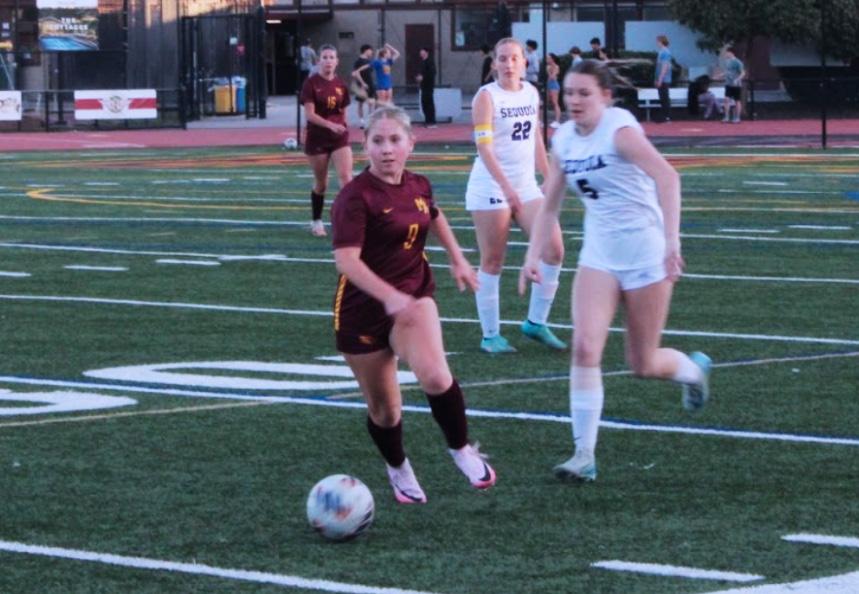
The girls soccer team finished in second place for league play with a 10-7-3 record. After a rough start of a 2-4-1 record in the first seven games of the season, the team managed to end 8-3-2. The Bears were the number one seed in CCS Division III. After defeating Pajaro Valley 3-0, the Bears faced Menlo in the semi-finals and suffered a heartbreaking 2-1 loss to end their season.
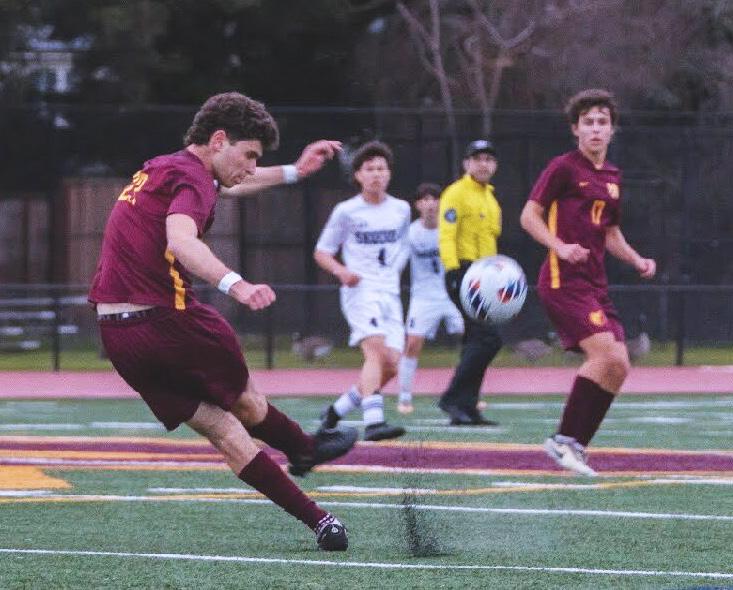
The boys soccer team breezed through league play, easily securing first place in PAL. The Bears were spearheaded offensively by senior forward Nathan Thurlow, who had an outstanding 21 goals for the season. Help from Thurlow, along with allaround amazing coordination and dedication from the team, allowed M-A to finish with an impressive 15-1-4 record. However, despite making CCS Division I, the Bears fell short 3-1 in their first match against Westmont to end their season.




The wrestling team made ample progress and improvement throughout the season. The wrestling team’s star, senior Eric Ruiz, placed on the podium for nearly every tournament and went on to compete in the CIF State tournament, being the first-ever two-time wrestling state qualifier in M-A history.

After placing third last year in league play, the girls basketball team stepped up to take the number one spot with a 10-2 league this year. They had a terrific season, dominating at their home court with an 8-1 record. The team seeded third in CCS Division I and destroyed both Hollister and Evergreen Valley to find their way into the finals against Los Gatos, where they fell 42-30.
by
and Ben
Dominating the season, boys basketball finished first in the league for the second year in a row with an 11-1 record. Because of their impressive season, the team qualified for the CCS Open Division, where they went 1-2 in pool play.


“Despite the fact that M-A is the largest school in the district with the greatest number of kids participating in sports, we get the exact same amount of money from the District as every other school, and that amount ranges from year to year,” M-A Athletic Boosters President Janelle McCombs said.

M-A Athletic Boosters is one of many nonprofit organizations working to bridge the gap between the funds that the District provides—which range from $50,000 to $80,000—and what the athletic department needs, which is closer to $300,000.
“Losekoot is incredibly supportive of students, so he tries to give additional money from his general budget to athletics as well, but even with that, there’s a huge shortfall in terms of what it takes to run these programs,” McCombs said.
According to M-A Athletic Direc-
tor Paul Snow, “that shortfall is around $200,000 to $250,000.” District funds and ticket sale profits pay for less than 40% of necessary costs to support M-A’s 61 sports teams. Boosters raised almost $200,000 last year to distribute to M-A’s teams.
District funds typically go to referees, transportation, and PAL and CCS game entry fees, leaving other necessities like uniforms and equipment behind. For the 2024-25 school year, the District in creased funding for coaching stipends.

Boosters raise money through donations and selling Bear Wear.
“Because we don’t raise enough money to give every sport everything they need, we set a priority system,” McCombs said. Boosters’ four priorities include covering coaching stipends, replacing uniforms every four years, base-level equipment, referees, and freshman teams. “The District doesn’t give any money for freshman teams, so we cover all the freshman teams on campus,” she said.
To divide these funds, coaches work with the athletic directors to determine what their sport needs. They then fill out a form for the Boosters detailing their requests.

“After they send the form back, our treasurer and I sit down with the athletic directors and review all of those requests to make sure that it is equitable,” McCombs explained.


to put a player on the field, which in cludes the cost of stipends, food, our ac ademic program, equipment, uniforms, etc.,” M-A Football Association President Susan Mohr said. “We get a certain percentage of that from the Boosters and from the District, and we are left trying to come up with the rest of it. We have to have around $150,000 a year, and that can come from all of those various sources, including what we provide.”
“Even with what boosters give and what they get from the school, for a lot of sports that’s still not enough.”
M-A ATHLETIC BOOSTERS PRESIDENT JANELLE MCCOMBS


The Boosters board then reviews each request and votes on the distribution of funds. “It’s really based on if the four key priorities have been met and how much we have raised. We can only give what we have raised,” McCombs said.
“Even with what Boosters give and what they get from the school, for a lot of sports, that’s still not enough,” McCombs said. For more funding, sports like football have created additional nonprofits to accept donations just for their program.
“It costs around $1,500
MAFA was founded in 2013 by a group of parents who thought that football needed more funding than the District could provide, and like Boosters, created a nonprofit. “Most of our board is of people who don’t even have kids at M-A anymore or in the program, but we understand what football can do for our student-athletes. Our traction comes from people with the love of football,” Mohr said. MAFA raises money through community fundraisers, parent donations, sponsorships, and grants.
Without these organizations, M-A would have to significantly cut down on its sports offerings.
by Tessa Ellingson designed
Miya Yu


Every year, new students join and leave the M-A community. While most transfer students have unique reasons for their switch, nearly every interviewed student who transferred from Eastside College Preparatory School had the same one—time.
Eastside, a private high school in East Palo Alto, is committed to “opening new doors for students historically underrepresented in higher education.” Unlike other high schools, Eastside students must stay on campus until 5 p.m. to finish work and meet with teachers. “We want to make sure it’s built-in that they have access to teachers to be able to get their homework done and ask questions before they go home,” Eastside Vice Principal Helen Kim said.
“I get my homework done before the end of the school day, so I don’t have to worry about it,” Eastside junior Anyrah Green-Frazier said. Others said they sometimes have assignments left to complete at home in spite of the built-in work time.
While the extended schedule can provide extra academic support for students, some feel it limits their social life and extracurricular activities. As a result, at least 12 students have transferred to M-A from Eastside in the past four years.
“I wanted to go to Homecoming dances and football games—things we didn’t have at Eastside,” junior Monte Galvin said. “All of our activities were academic-based, so they weren’t fun.”
“I like that M-A is a bigger community,” senior Emi Jackson said. “I can choose my classes at M-A, versus at Eastside, I couldn’t.” Jackson, who transferred in the middle of her junior year, found being able to choose classes she was interested in improved her GPA.
At Eastside, core academic classes are uniformly required for each student from freshman to junior year. Although there is less choice for students, by incorporat-

ing community college credit alongside necessary A-G courses, Eastside students graduate eligible to attend most colleges and are already equipped with college credits. Many public schools like M-A offer more course choices, but their graduation requirements don’t fully align with California’s A-G requirements.
“When it comes to classes, I have a foundation of how to study that allows me to control my schedule,” Eastside alum Ashley Mobley said. “Since I took Foothill classes in high school, I got to skip the first level of English and math in college.”
However, navigating such a rigorous schedule came with challenges for many students.
“It was really hard for me to keep up with sports practice, heavy tutoring, and schoolwork,” junior Ape Ulukivaiola, who chose to attend M-A for its basketball program, said.
The influx of students transferring from Eastside to M-A raises the question of how to balance fun with academics. Some praise Eastside for its dedication to academic growth. However, other students disagree, emphasizing the importance of social development in the education system.
“Now that I’m in college, I realize how much I missed out on my teen years,” Mobley said. “We always finished so late. I lived in the dorms so I wasn’t able to go out unless it was an outing that they gave to us.”
offers less time for large social events, it provides them with tight-knit relationships. “I miss how small the community was. It was kind of like a family,” M-A transfer and senior Mayani Williams said.
“At Eastside, you know almost everybody—every single staff member and student that attends,” Green-Frazier said. “For sporting events, our gym is always packed with students and parents, everybody’s there to support each other.”
Transferring has ultimately allowed students to determine how they will use their time in high school. “I feel like I’m having way more fun at M-A,” Galvin concluded. “Learning to balance social life and academics is really the main thing.”
by Tatiola Sobomehin designed by Abby Medin and Caitlin Smith illustrated by Caitlin Smith photo courtesy of Tatiola Sobohemin

According to Kim, although the number of students transferring away from Eastside has generally remained the same, M-A has become an increasingly common landing spot for students. “It’s a larger school—big Homecomings and a big school atmosphere. M-A is definitely the choice if that’s the kind of high school experience you’re looking for,” she said. While many note that Eastside


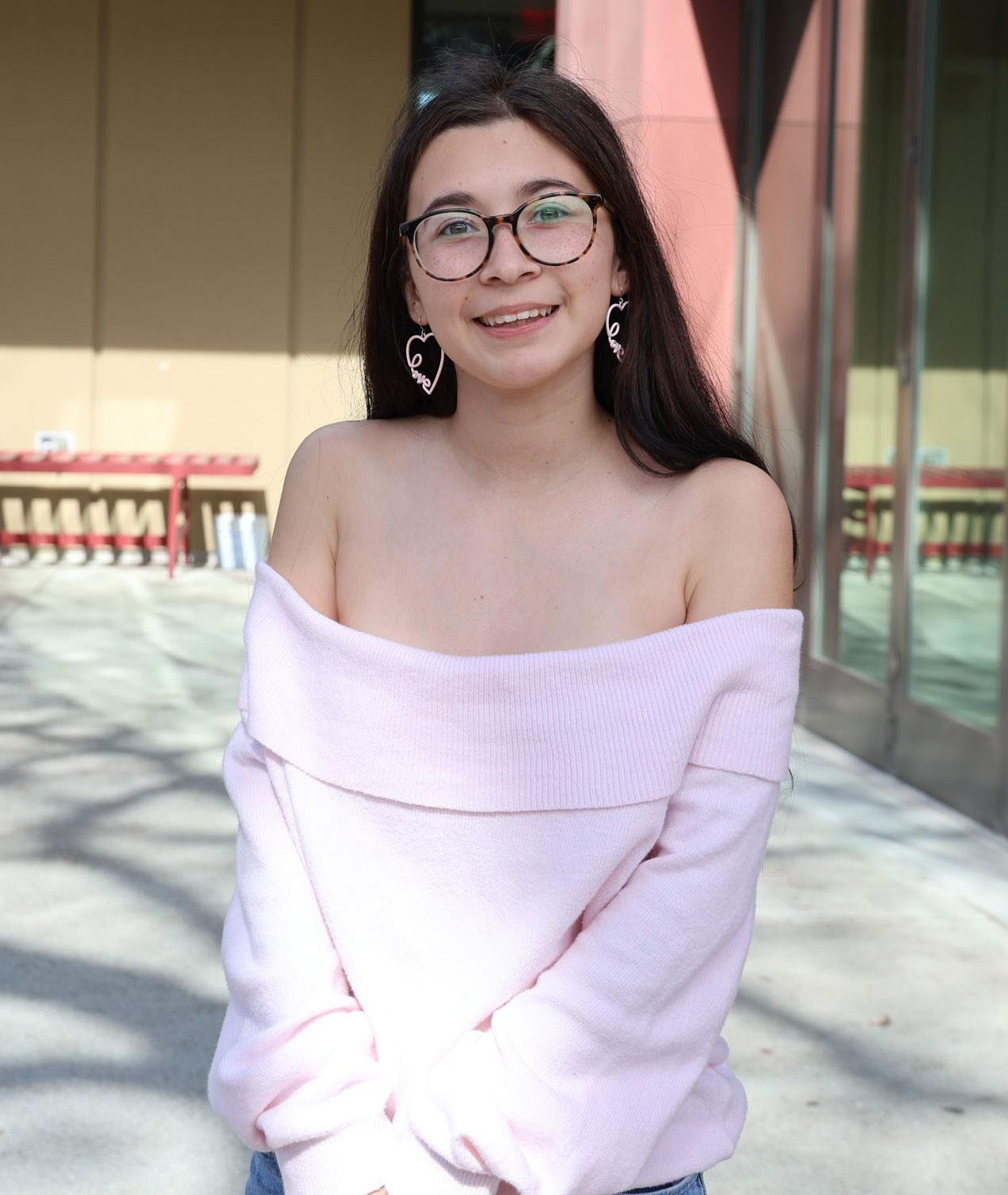


RYAN DYER, SENIOR
“When it comes to what you wear or just who you are, just be yourself, be authentic. Don’t pretend to be somebody you’re not. Do what makes you happy, and express yourself how you want to.”


“I don’t have a label for my style, it’s just what I want to wear. I see something, I want to wear it, and then from there I figure out what I want to wear with that to form something cohesive.”


JAYSCE REESE, JUNIOR
“I get my inspiration from my mom. I’ve just been so used to her picking out my clothes. She’s always dressed me, so I kind of took how she dressed me and made it into my own and with stuff I like.”



“A lot of my closet consists of basic pieces and neutrals, recently I’ve been finding more fun pieces to dress them up and make new outfits.”



KEANAN EVAIMALO, JUNIOR
“I don’t just stick to one style, I like to wear everything.”

“When my teacher went to go pick up my APUSH final, the Testing Center said they lost it,” junior Amari Witt* said. “It ended up being found two months after the semester was over and grades were due.”
Many students who use the Testing Center shared similar complaints about misplaced tests and frequent distractions. Students interviewed claimed the Testing Center’s disorganization creates a chaotic environment that defeats the purpose of small-setting accommodations and allows rampant cheating.
Nearly a third of M-A students have either an Individualized Education Program, 504 plan, or both, and one of the most common accommodations is taking assessments in alternative settings.
“A lot of people have accommodations, and the proctors just can’t handle the volume,” senior Meghan Lam said. Last semester, M-A needed to use additional classrooms to seat the large number of students requiring an alternative setting.
The Testing Center’s intended peaceful environment is often disturbed by noise from nearby classrooms, the Green, and bustling school lunch lines.
“The room gets loud anytime someone comes in, finishes a test, or when neighboring rooms make noise, and that is su-
per distracting during testing,” Witt said.
These distractions worsen during finals weeks when more students use the Testing Center. Most of the additional classrooms used for finals week testing this year had around 20 to 30 people and were often louder and more distracting than regular classrooms. The average classroom size at M-A in the 2022-23 school year was 20 students.
“The room was full,” junior Gabby Rothstein said. “Like, over 30 people there. It was packed.” Rothstein took her math, history, and Spanish finals in the Testing Center and was there every day of the week.
During finals, the Testing Center and other alternative setting classrooms had students starting and finishing tests at different times. Many students found this distracting and overwhelming. “I started my English final, and proctors were still calling out names and starting other tests,” Lam said.
“It was never silent in D-24, and it seemed like something was always going on,” senior Miller Scott, who also took his finals in the Testing Center, said. “It was very chaotic.”
“I would have chosen to take my finals in my classroom if I had been allowed to stay for extra time because it was much quieter,” Rothstein said.
The M-A Chronicle reached out to school administration and Testing Center staff but neither responded before the publication of this story.
The Testing Center has rules in place to prevent cheating, including mandatory cell phone and smartwatch pockets and dividers on adjacent desks. Despite the implementation of these physical measures, interviewed students said cheating still goes largely unchecked.
Proctors are often focused on multiple tests at once and are unable to monitor students as closely as teachers in a regular classroom. Proctors often don’t check what materials students are bringing to their desks.
“It was clear that people could cheat,” Scott said. “Any given person could have brought notes or other materials to their desks and gotten away with it.”
“When you’re taking the test, there’s no one actively walking around or looking over your shoulder. Also, you’re not facing the proctor, so if you wanted to take out notes or something, you definitely could,” Lam said.
“Out of my 120 students, I have around 40 students with accommodations,” English department head Liane Strub said. “If you actually have ADHD, you need to be in an environment where you’re not distracted.”
*Amari Witt is a journalist for the M-A Chronicle.
by Aliyah Chowdhary-Fitton designed by Aliyah Chowdhary-Fitton photo courtesy of Aliyah Chowdhary-Fitton
The cost of living has grown exponentially throughout the nation since the pandemic. This phenomenon has been magnified in the Bay Area, where the high cost of basic necessities, such as housing, groceries, and gas makes living unaffordable and inaccessible to many. As the Trump administration plans to levy tariffs on the U.S.’s closest trading partners, these already high prices are expected to skyrocket. Take a look at statistics that demonstrate this rise.



In the last 25 years, the cost of hashousing risen 162% 78%. while the average income has only risen by Leah Collins designed by Leah
115% The average California house is the average house nationally. more expensive than

2018 to 2025



The average cost of bread rose 49.22%, from $1.28 to 1.91%.
The average cost of groceries rose 27.47%, from $185.51 to $236.48.


The average cost of milk rose 69.39%, from $2.45 to $4.15.
The average cost of eggs rose 288.56%, from $2.36 to $9.17.

With the rise of digital resources, many teachers and students have given traditional textbooks the cold shoulder. Still, all M-A students pick up textbooks at the start of the year, even for classes that never use the book.
This textbook requirement stems from a state law that mandates all students have equal, readily available access to educational resources that are in adequate condition. But some students and teachers aren’t sure there is a place for these once-essential materials in today’s classrooms.
Spanish II teacher Michael Mueller doesn’t use textbooks at all. “We like to keep the class more lively and in the moment,” he said.
“There’s got to be some value from it, but I’ve never had an instance where I’ve actually had to use a textbook,” senior Angel Gomez said. “There’ll be times where some teachers say, ‘We might use a textbook later in the year,’ but we never do. They sometimes say ‘refer to the textbook,’ but no one actually does that.”

Sophomore Sasha Zykova agreed.
“I don’t think there’s really a point in using it unless you’re consistently missing class. It’s situational,” she
Social studies teacher Kelsey Takahashi creates online handouts based on the textbook to reduce hassle and ensure her lessons correlate to the book. “It’s a good dominant narrative. It is important to add a counter-narrative or go deeper with what information is presented,” she

Other teachers try to incorporate the textbook into their curriculum more. For instance, math teacher Carlos Martinez shifted his teaching style for
his Geometry Enriched classes. “I’m trying to make it more regular to actually read the sections,” he said.
On the other hand, some teachers believe using textbooks improves reading comprehension, which is an integral skill for higher education. For his AP Environmental Science classes, teacher Lance Powell uses an independent study format focused on the textbook. “I think that students getting practice reading expository texts is a really good skill for them to have that they can carry into college. If we’re not doing it here, it’s a bit of a disservice,” he said.
Sophomore Felix Crim sees the value in the law but believes it is unnecessary for the district. “It is important because, especially in lower-funded areas, students really need resources. It doesn’t really apply to our district because most things are available online,” he said.
Biology teacher Lauren Lesyna prefers more dynamic resources. “If I use articles and different sources, I can adjust the reading level to suit different students’ needs. In a textbook, there’s only one reading level,” she said.
Although many students find textbooks irrelevant, others appreciate their digital versions. The read-aloud feature of the AP World History online book is helpful for sophomore Taruni Tiruchinapally. “I like listening to it like a podcast while multitasking to save time,” she said. “But I still think hearing my teacher explain things in class is way more helpful.”
Freshman Zach Egnal doesn’t even bother with books. “I got rid of them on the day that I got them. We already have Chromebooks, and I don’t want to have to carry them around,” he said.
Mueller thinks the school should use exclusively online textbooks instead of spending significant funding on paper books that go to waste. “I would like to see us stop spending money on textbooks and killing so many trees,” he said.
“Textbooks are bulky, large, and kind of a pain. Why would I physically find the pages when I could just have it on my computer?” Crim said.
by Lilia Wilkiewicz
designed by Parmis Hoghooghi photo courtesy of Parmis Hoghooghi
Hallways at M-A are lined with bright yellow lockers, but most of them are left untouched. With most students carrying around their books, lunch boxes, and sports equipment, are lockers still a necessity, or just a relic of the past?
To answer this question, the M-A Chronicle polled 249 juniors to see how many students actually use their lockers, and what they use them for. Out of the 31% of participating students who have a locker, 14% of them use their lockers for sports equipment, while 7% use them to store school supplies. Another 10% of the students have a locker but do not use it.
Unclear instructions may have led to decreased locker usage: some students missed the chance to sign up at the start of the school year.
Sophomore Anna Abbas wishes for a locker. “During volleyball season, I had to carry a big bag to each of my classes, which was really inconvenient,” she said. “Dragging two backpacks around all day was just too much. I wanted to sign up for a locker, but I didn’t know where to fill out the form.”
At the start of the year, students are given a chance to sign up for a locker at orientation or online through a Google Form, which is often overlooked by unaware students who miss their orientation day.
For athletes, bulky bags full of sports equipment make navigating crowded hallways difficult. Although Abbas believes having a locker would benefit her, she still has doubts. “Honestly, the lockers are really dirty, and I don’t feel comfortable leaving my valuables in there. My bag might not even be able to fit in the lockers,” she said.
Sophomore Felix Crim, on the other hand, has a locker but never uses it. “At orientation, someone asked me if I wanted a locker. I just took one, but I have never opened it. I don’t even know where it is,” he said.
Even for students who have a locker, it can be hard to access it on a large campus. With long hallways, spread out buildings, and short passing periods, getting to a locker between classes can be both difficult and inconvenient.
Junior Ismael Peña-Arreola, however, uses his locker every day. He keeps textbooks, perfume, and lip gloss inside his locker, and
he decorated the interior with butterflies and mirrors. “I go to my locker every day during brunch and lunch,” he said. “It has become a great hangout spot for my group and allows me to touch up my makeup and perfume.”
While some students expressed concerns over goods being stolen from their lockers, Peña-Arreola felt confident that it wasn’t a problem. “Things aren’t going to get stolen,” he said. “Not unless you don’t lock it.”
Though lockers may not be widely used by everyone, they still serve a valuable purpose for many. Many students appreciate the organization that lockers provide, while others are reassured by the sense of privacy they give.
by Julinka Pang & Sophie Marks designed by Karen Martinez photo courtesy of Karen Martinez

Social studies teacher Sam Harris died by suicide on Jan. 28. Harris, who was 40, was in his ninth year of teaching at M-A.
Since arriving in 2015, Harris taught a variety of subjects, including Government, AP U.S. History, U.S. History, World Studies, and Life Skills. He had been teaching APUSH and Government this school year.
“Mr. Harris brought so much passion into the classroom every day. He wasn’t just teaching history—he was living it, sharing it, and making it matter,” junior Shawnak Shivakumar said. “To me, he was more than a teacher—he was a friend and a mentor, someone who truly believed in me and cheered us on.”
“Sam Harris was an exceptional man and educator who devoted himself to his students and his subjects with unwavering passion. His intellect was matched only by his commitment to helping students understand their pivotal role in a functioning democracy,” Andrew Stuart, who co-taught Government with Harris, said.
“His belief in his students and his unwavering optimism about the power of education left a lasting mark on everyone who had the privilege of learning from him,” Sathvik Nori ’21 shared. Nori, who is now a District Trustee, had Harris for World Studies his freshman year and maintained a close relationship with him.
Harris was raised in Fresno and attended Fresno State and UCLA, where he obtained a bachelor’s degree in History. He earned his teaching credentials at San Francisco State University and taught at a middle school in South San Francisco before coming to M-A.
“In the two years I had Mr. Harris, I felt like I really got to know him. When I talked to him, I really felt like an equal,” senior
Rowan Hanley said. “He had an unconventional style of teaching, where it really felt like we could end up discussing anything from current events to politics to what our plans were on Friday night.”
Students and colleagues appreciated Harris’ compassion and attentiveness.
“I remember, my second or third week in his class, I was going through a really rough time mentally, and somehow, he noticed when no one else did. He checked in with me after class and asked if I was doing alright, which really meant a lot to me,” Cleo Rehkopf ’24 said.
“He was one of the funniest teachers I had,” Ziomara Navarro ’24 said. “He cared about his students and their personal struggles regarding mental health and family matters.”
“Sam was a thoughtful and introspective person with a big heart and quirky and fun sense of humor,” social studies teacher Katie Lavoie shared. “I think it’s important for people to know how much Sam valued relationships with people. His friends. His family. The elderly members in his community he went out of his way to get to know and spent time with to ensure they did not feel alone. He possessed a lot of empathy.”

As a U.S. History and Government teacher, Harris was committed to helping his students understand the history that impacted their daily lives. His passion was bolstered by his seemingly infinite knowledge of niche history trivia.
“This is my second year at M-A, so I’m still getting to know people, and Mr.
“Mr. Harris brought so much passion into the classroom every day. He wasn’t just teaching history—he was living it, sharing it, and making it matter.”
JUNIOR SHAWNAK SHIVAKUMAR

Harris was one of the first people to welcome me here since we were working on teaching APUSH together,” social studies teacher Karen Ramroth said. “I could tell immediately that he loved teaching and really tried to give his students a learning experience, as opposed to a test-prep experience.”
“Something everyone should remember about Sam was his dedication,” former M-A social studies teacher Mallory Byrne said. “Sam was a caring educator who prompted students to make connections between the past and the present.”
Known for being thoughtful and outspoken, Harris was regularly interviewed by the M-A Chronicle and The Mark on everything from rap beef to politics.
Harris was a music enthusiast, with his diverse range of favorite artists including jazz saxophonist John Coltrane, rock band Radiohead, and rapper MF DOOM. He shared this love of music with his students, decorating his classroom with posters and asking students to add their favorite songs to a class playlist.
In 2017, Harris coached the girls golf team at M-A. As an avid golfer, he frequently spent time on the course outside of his coaching duties, oftentimes with fellow teachers or former students.
He was also known for his love of his dog, Oliver. “Our shared love for our fur babies is one thing that we initially connected over,” Lavoie said.
“He would always be there if I needed some help. He loved to talk about sports and life with me, and he kept his class engaging and in tune with the present,” Rowan Kelly ’24 said.
“Above all, I will remember Sam for his boundless energy and kindness, which made him not only a remarkable teacher but a genuine friend and collaborator,” Stuart said. “Over the five years we cotaught, I learned so much from him, and I will deeply miss his presence.”
by Becca Koenig and Rose Chane designed by Eileen Liu photos courtesy of Dylan Lanier, Lindsay Park, and Celeste Zucker
“I think it’s important for people to know how much Sam valued relationships with people. His friends. His family. The elderly members in his community he went out of his way to get to know and spent time with to ensure they did not feel alone. He possessed a lot of empathy.”
HISTORY TEACHER KATIE LAVOIE




by Bailey Lanier designed by Eileen Liu

1. What clubs do on the Green to raise money
2. Popular sports channel without an S
3. With 13-across: a way Bears win sports games
4. Acronym for “refractive lens exchange”
5. South Africa’s name in a game of cricket, abbrv.
6. Sksksksksksk
8. You have to do this in your seat before the bell rings to be on time
11. Okay in text lingo
12. Affectionate statement in the fourth most spoken global language
14. What you should do at the end of Hadestown or when Bears do 13-across or 3-down
15. Laugh _ _ (popular text abbreviation)
16. A cool way to customize your car
18. You do this in the halls to someone you don’t know very well
1. We are the M-A _____

6. At M-A, we have a lot of administrative _ _s (acronym)
7. If a course isn’t grade level, it may be this
9. The Grinch is very excited for this surgery
10. Relationship disqualification such as chewing with your mouth open
12. Briefly banned at approximately 7:30 p.m. on January 18th (first letter and second word)
13. With 3-down: a way Bears win sports games
17. One of these you may have learned about in history class is the UN
19. Where most of your favorite influencers probably live (abbreviation)
20. Roblox and Call of Duty are examples of this type of digital quest
21. TV shows are split up into these
Match each teacher to their high school photo.
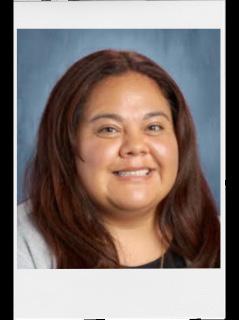


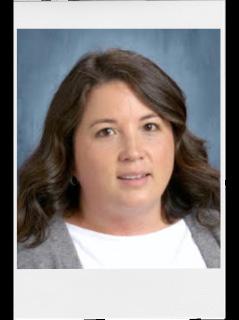



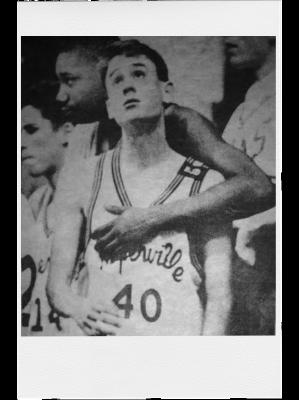






@machronicle @machronicle @themachronicle